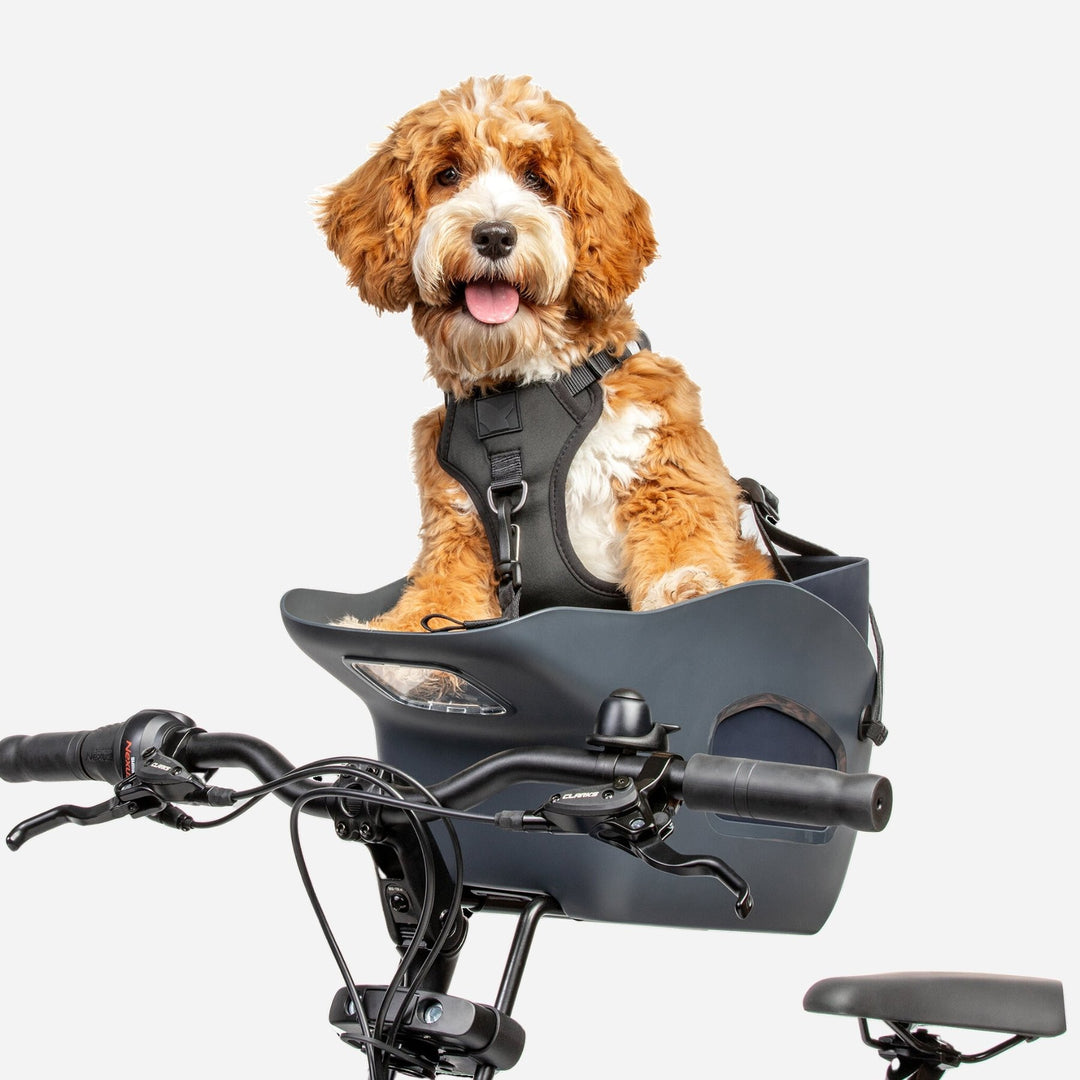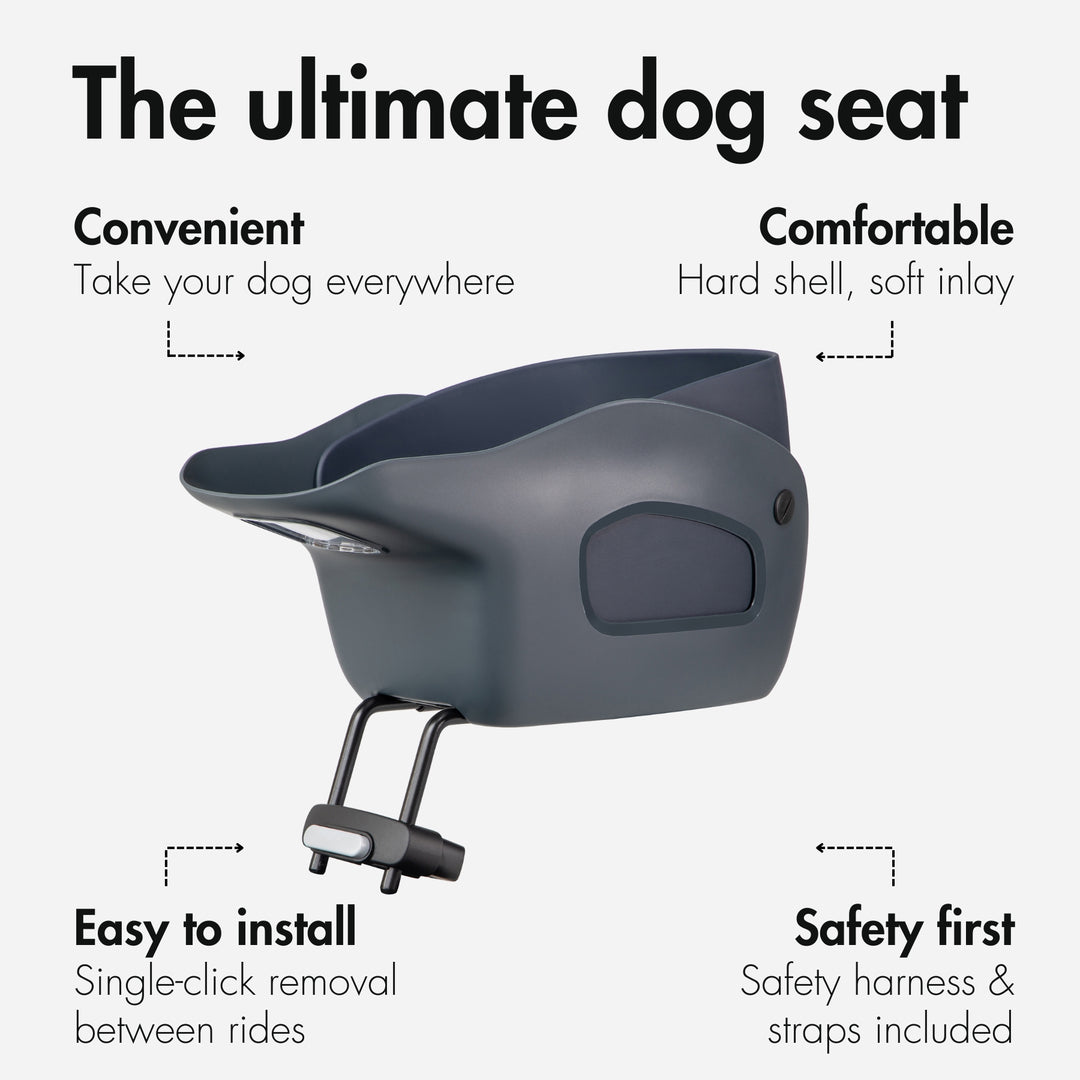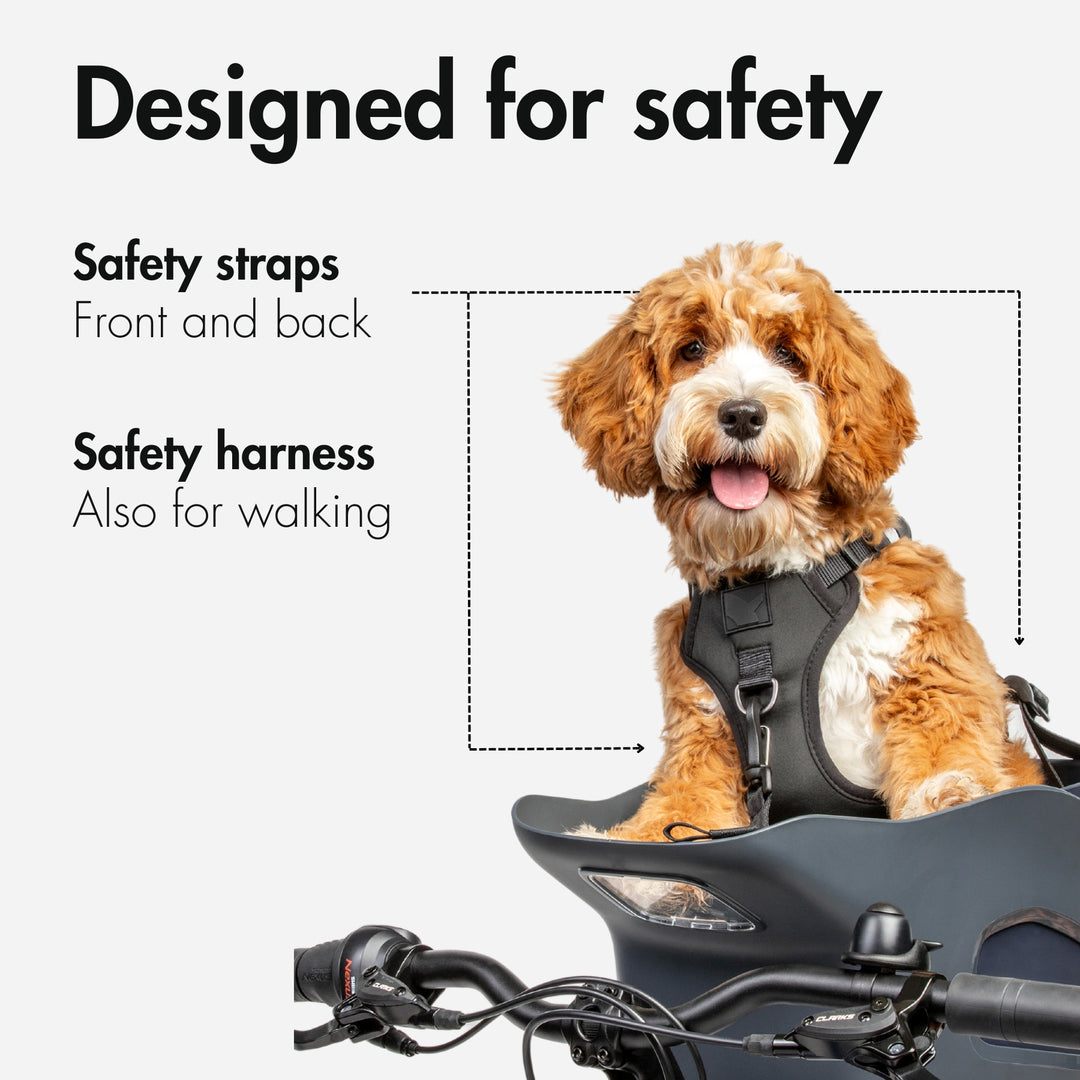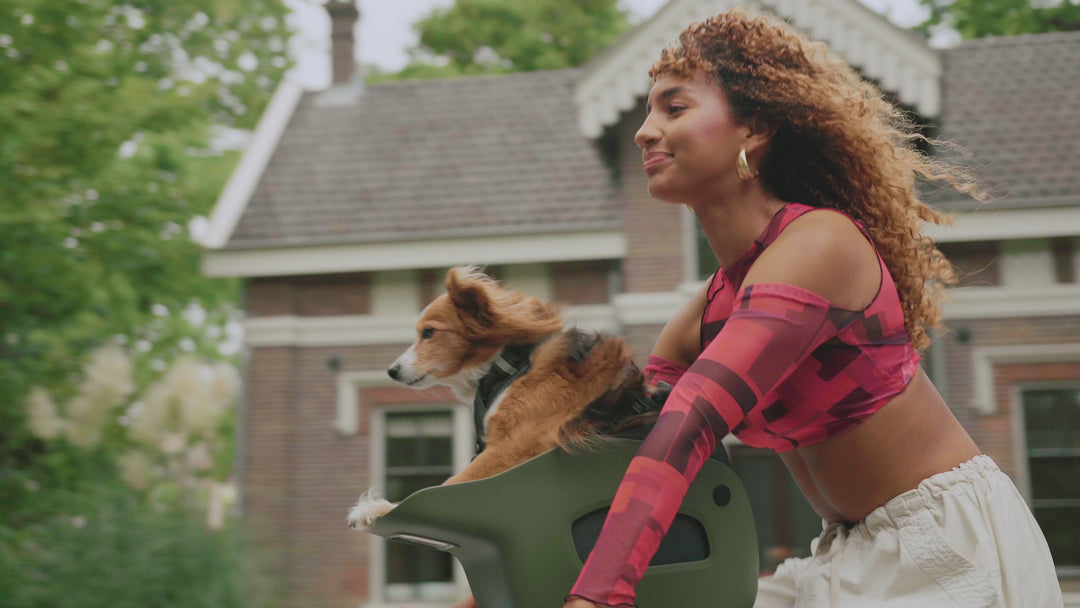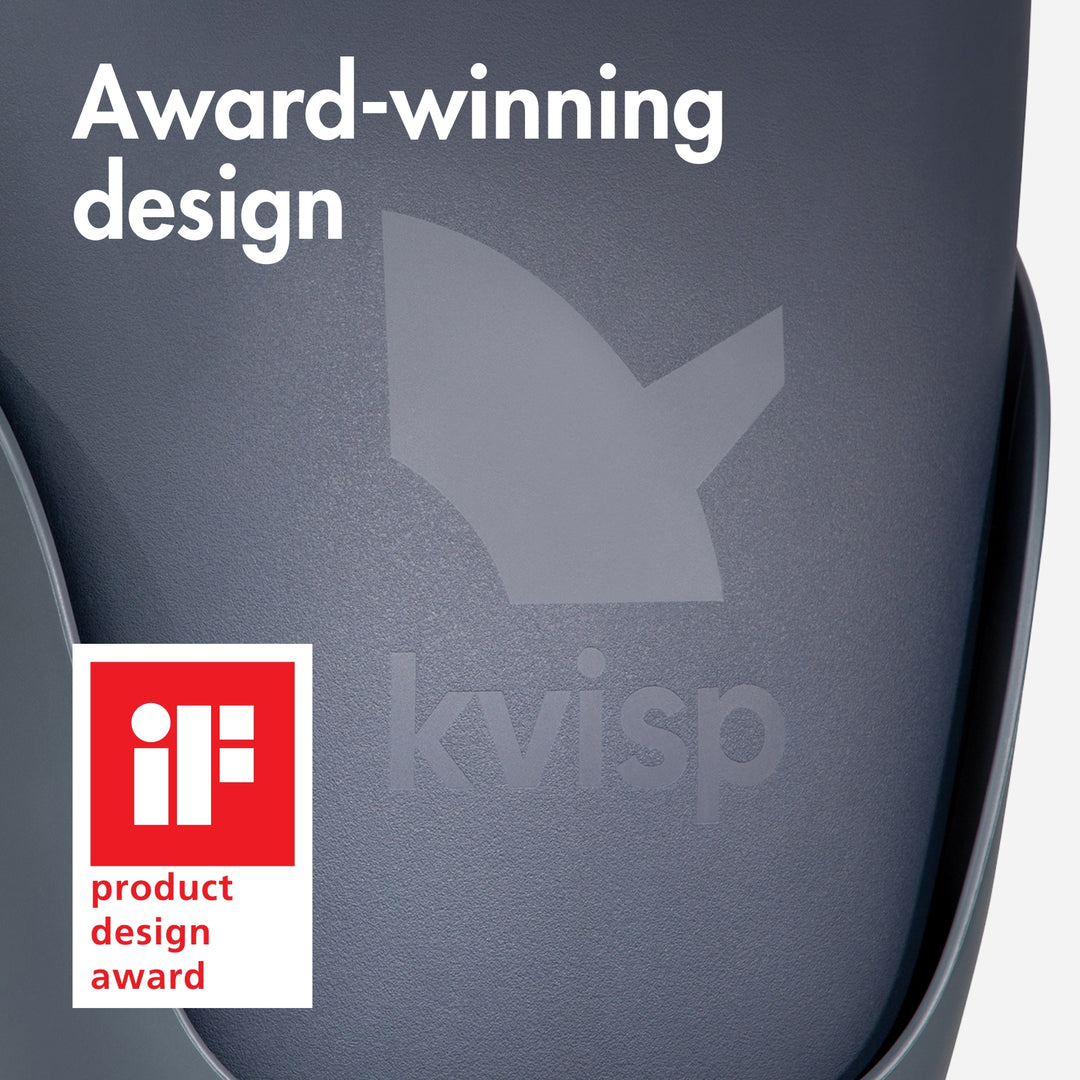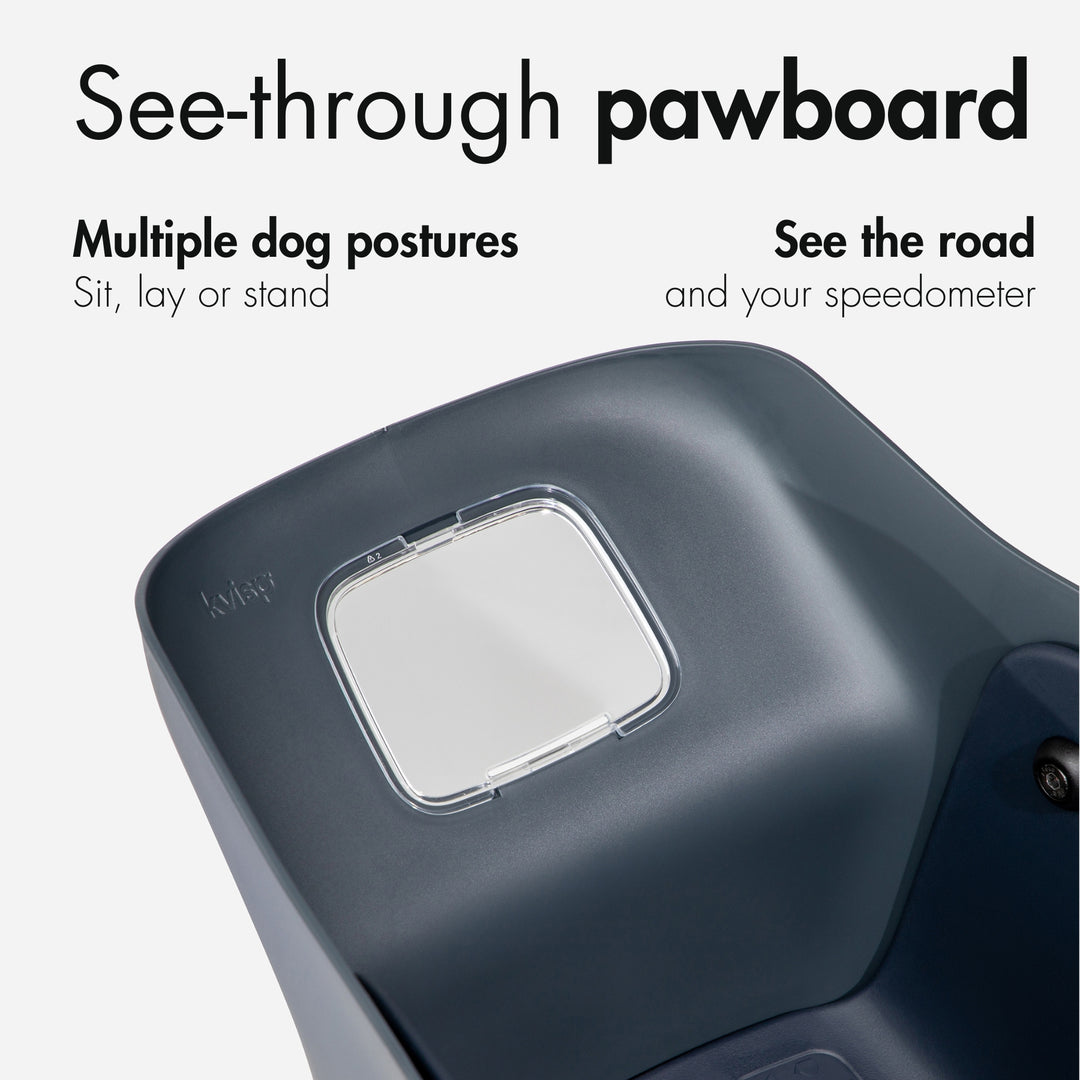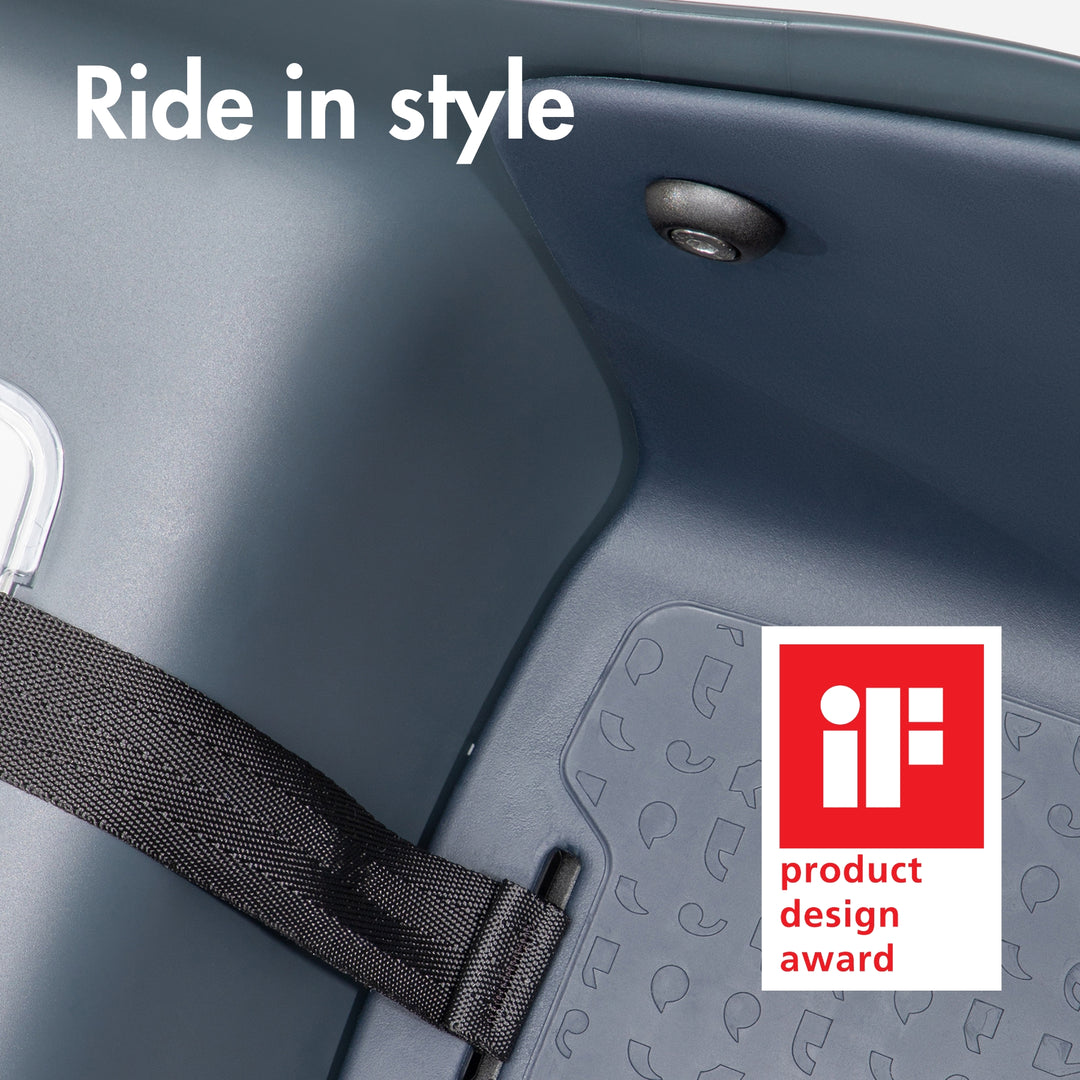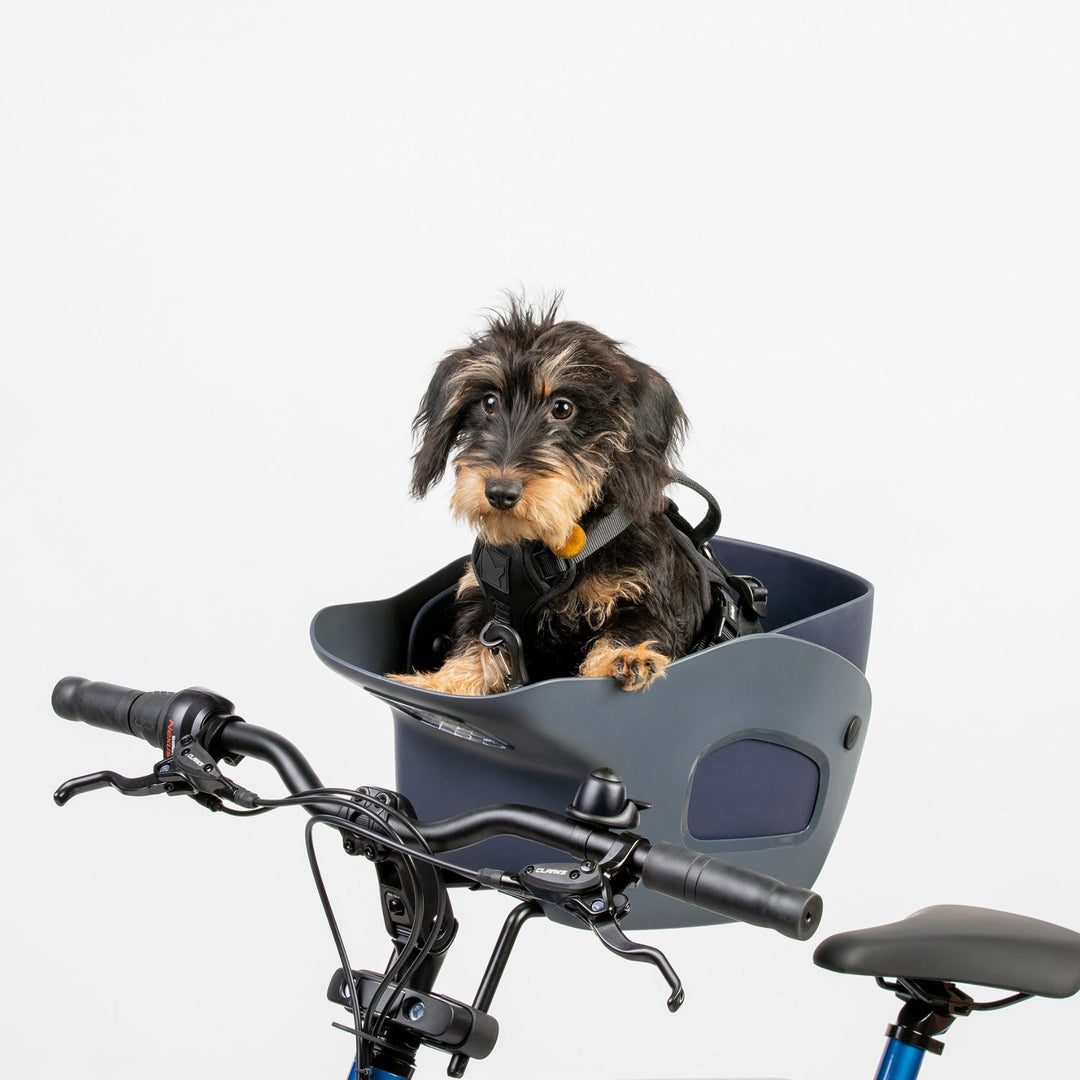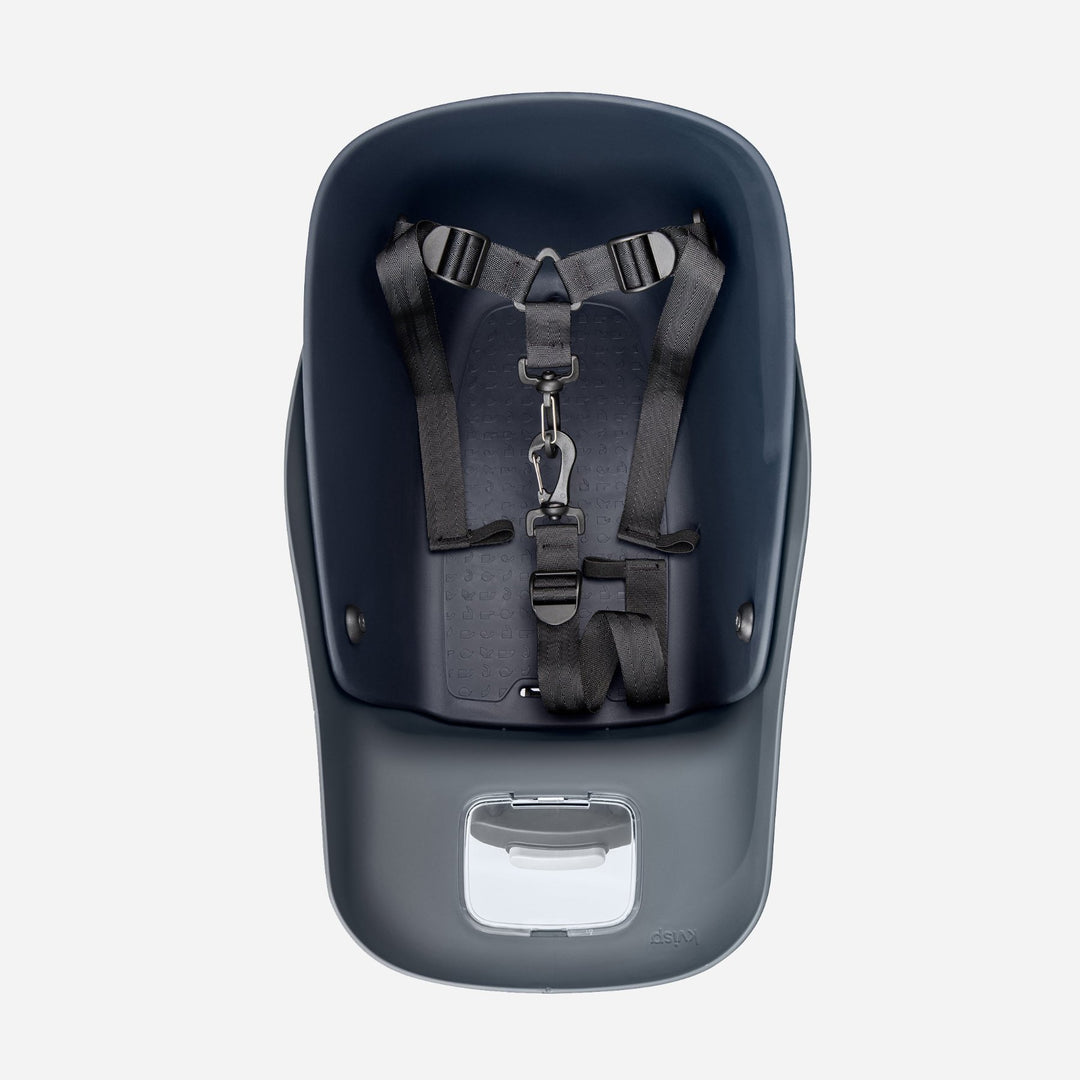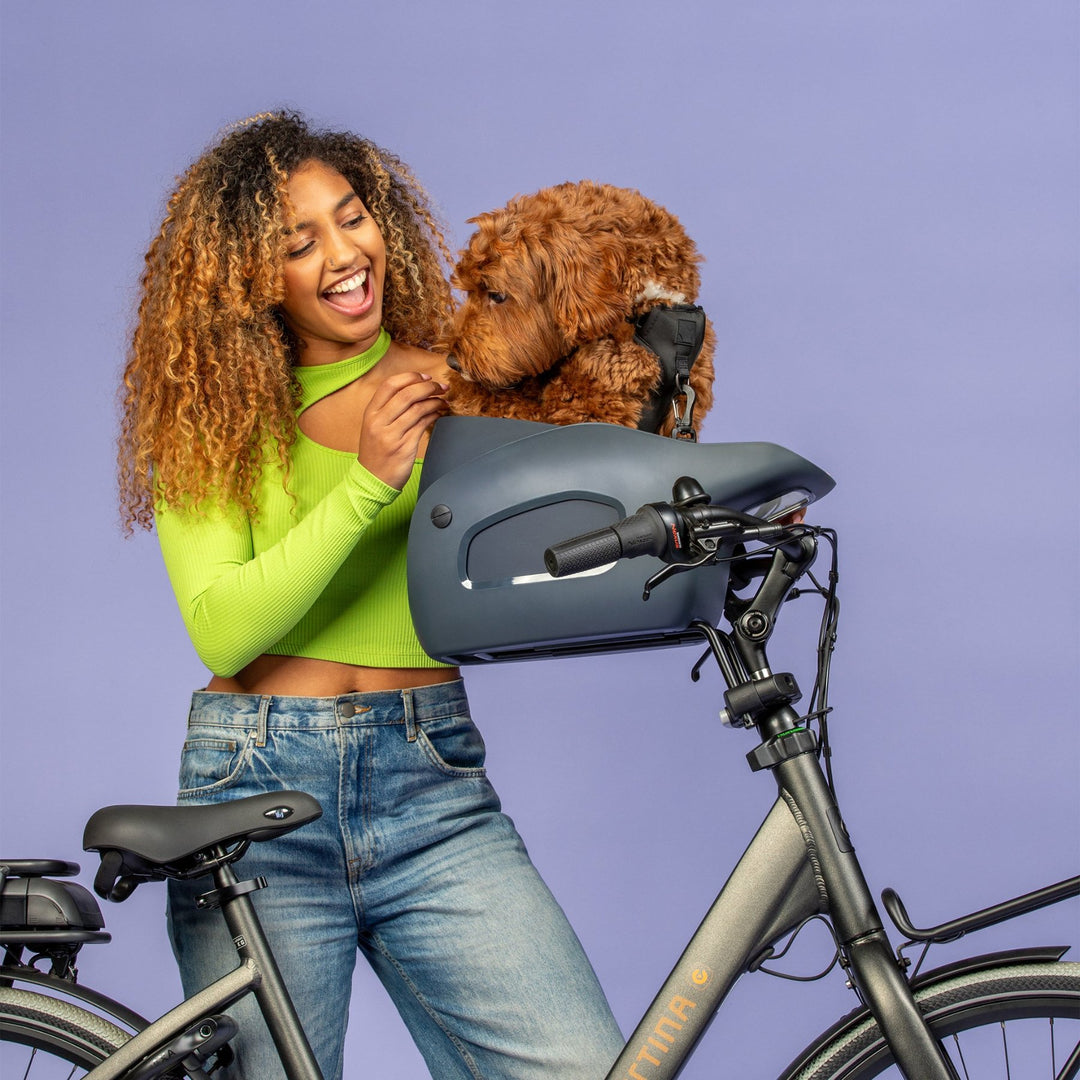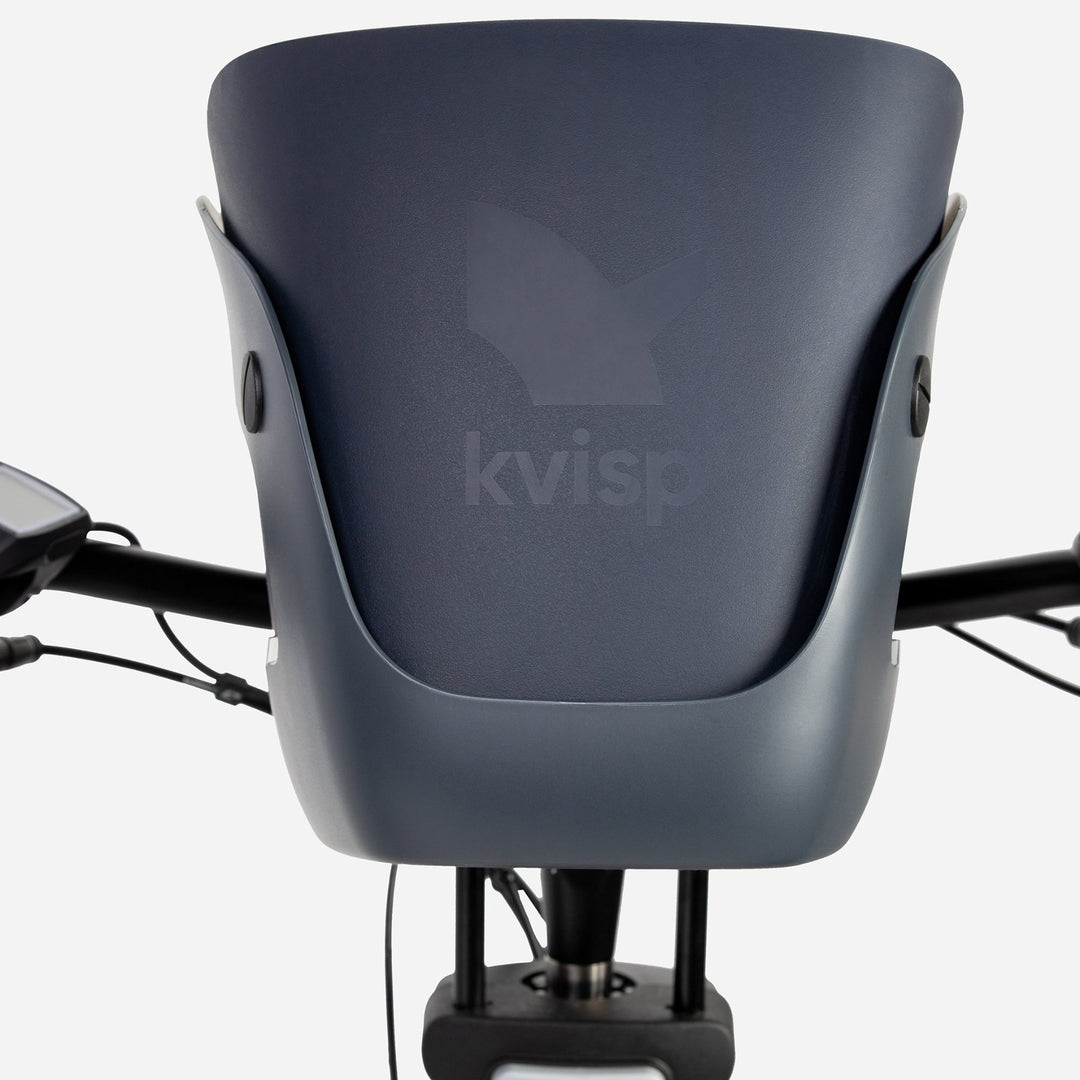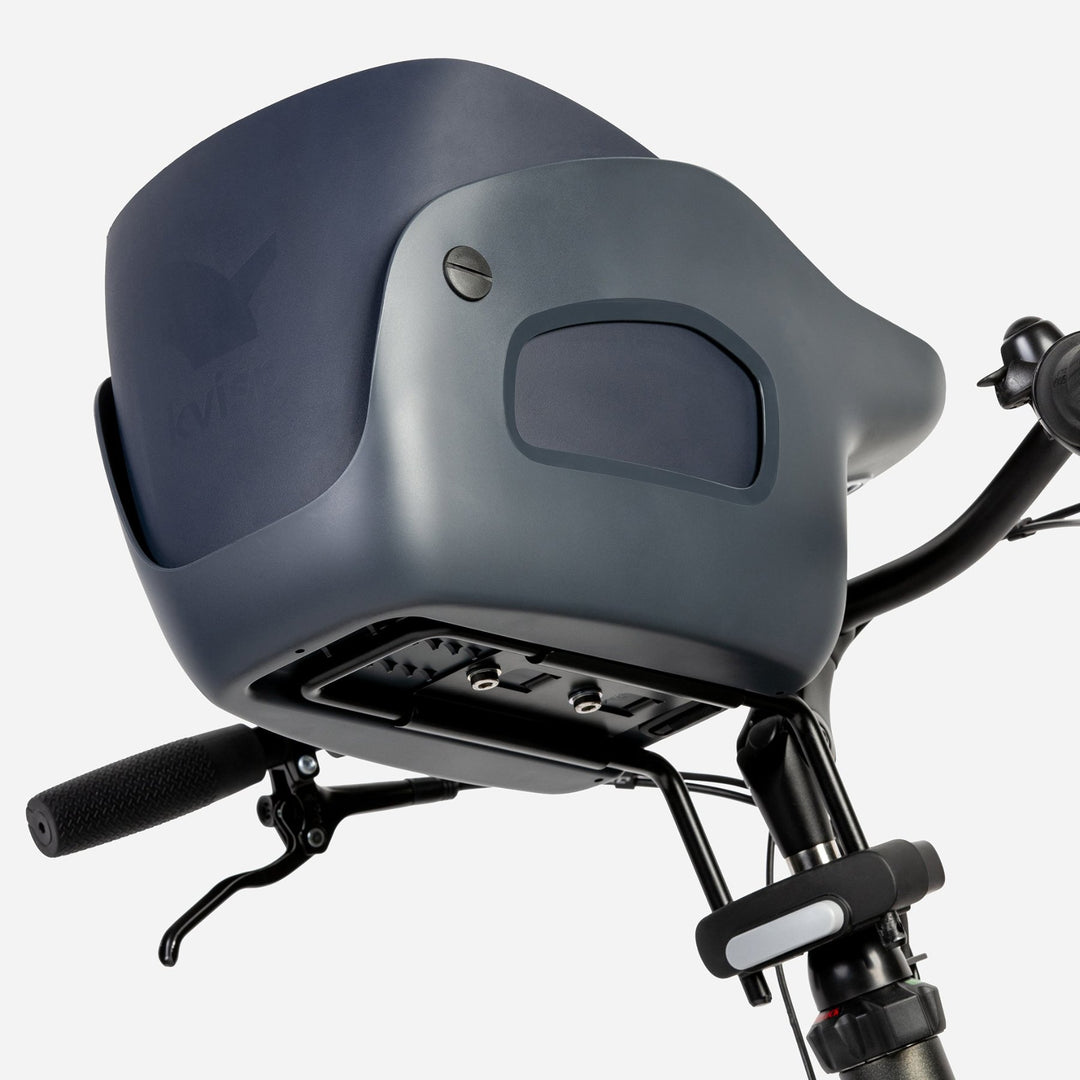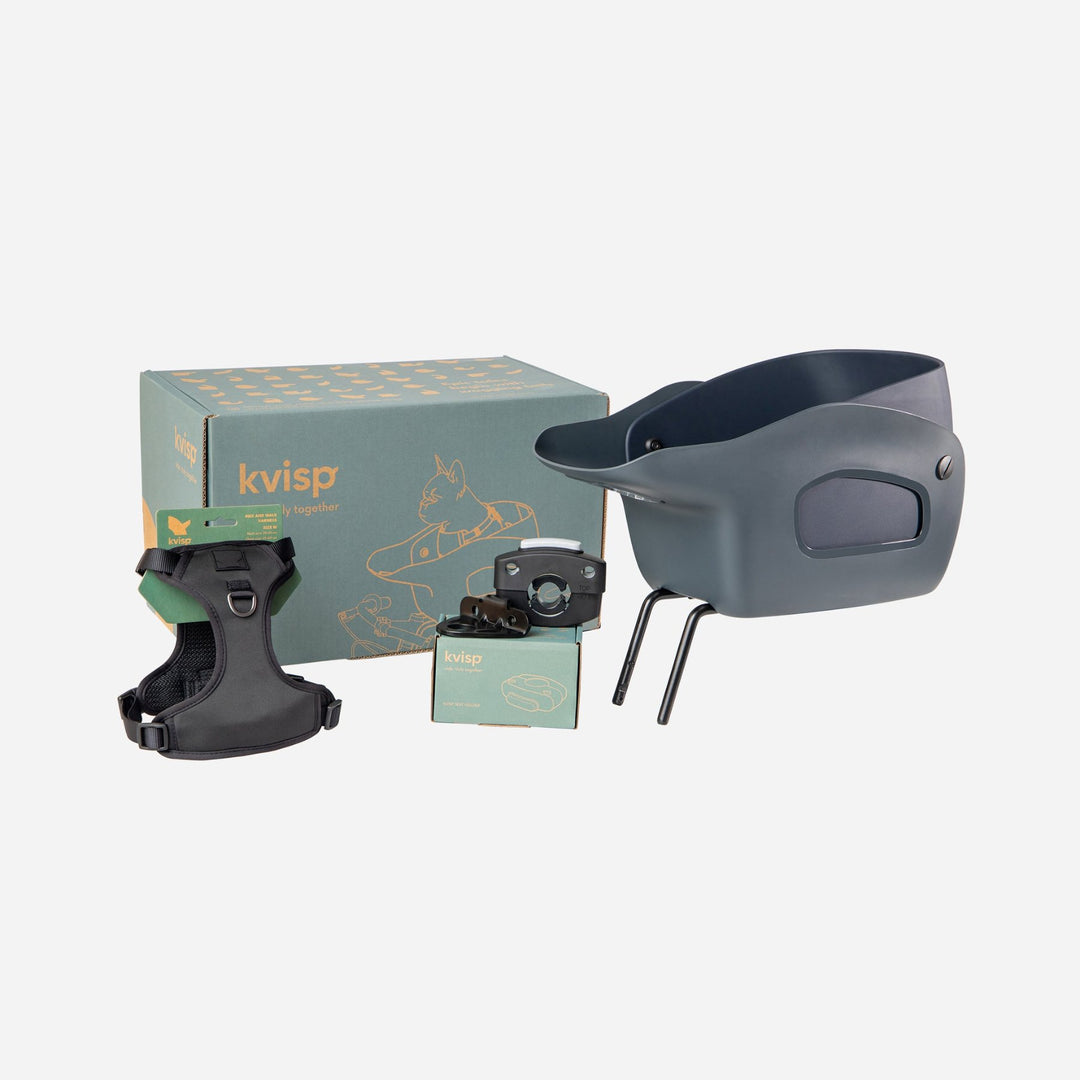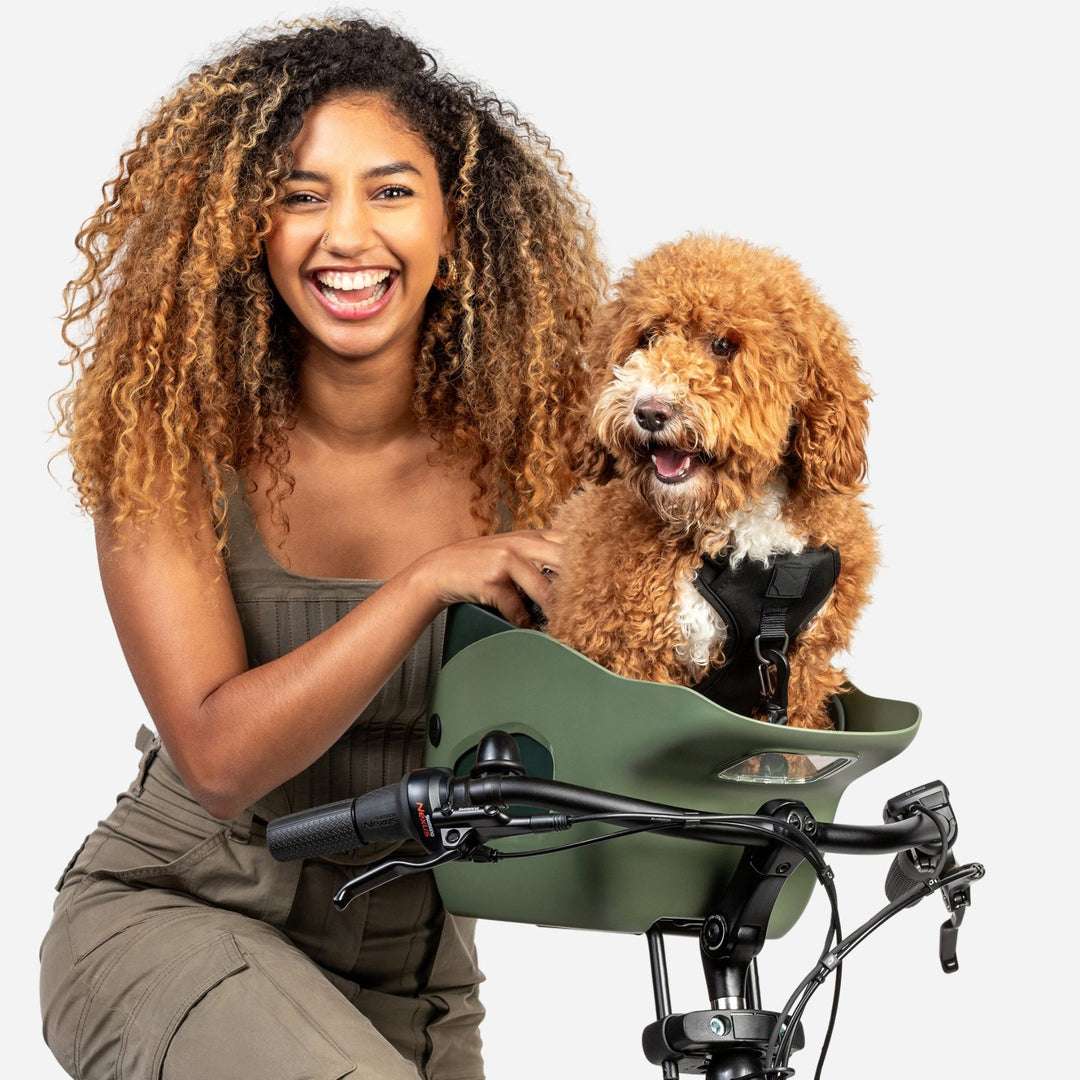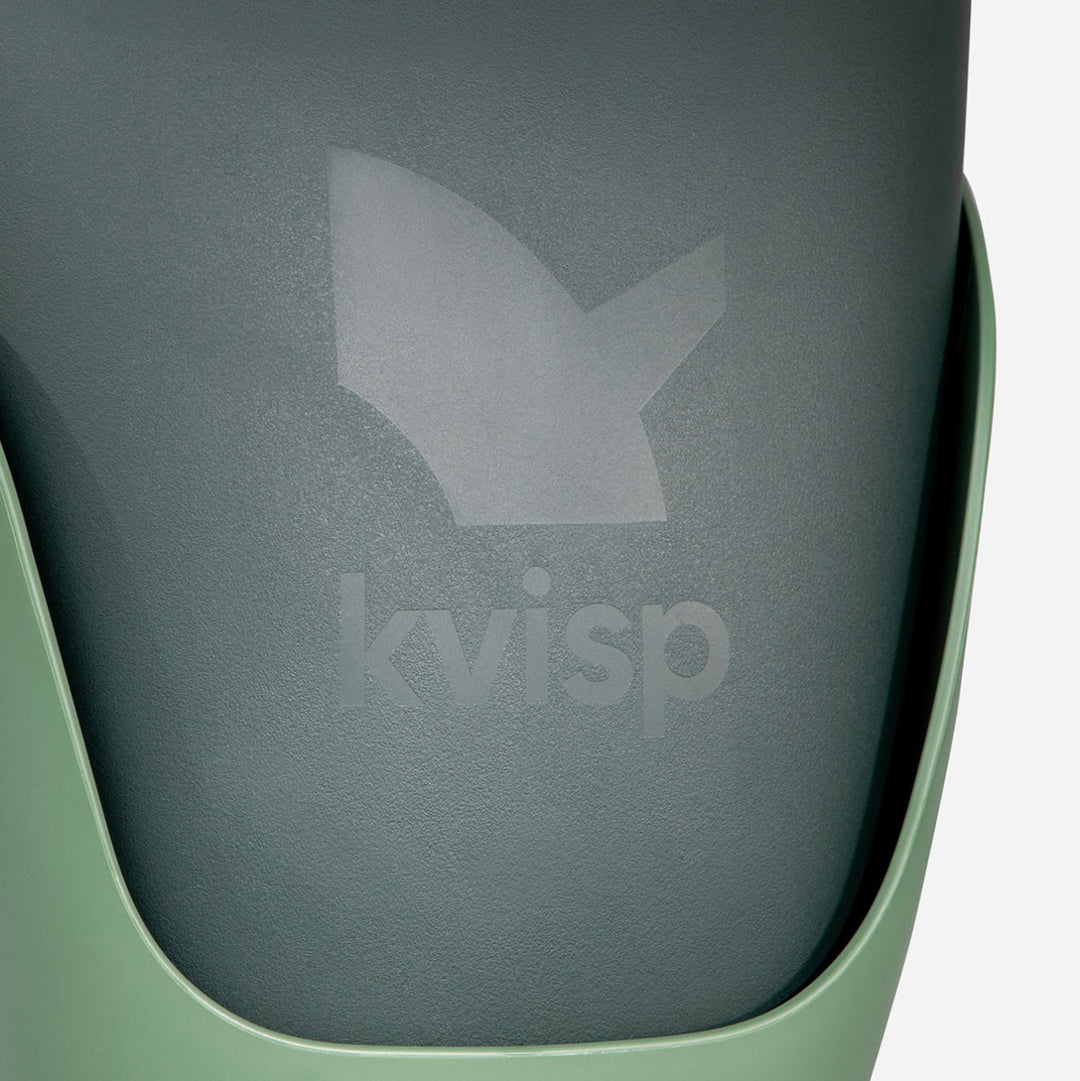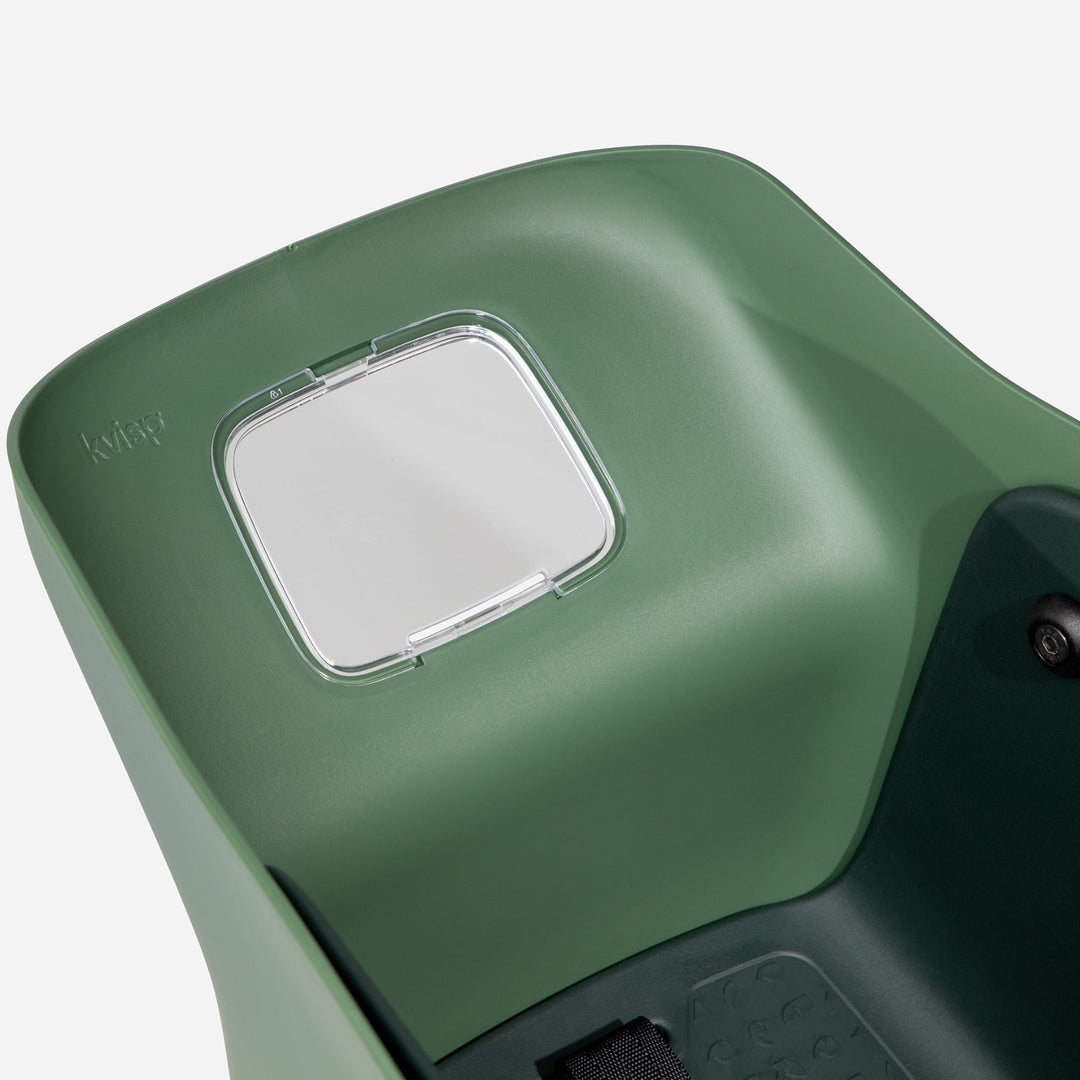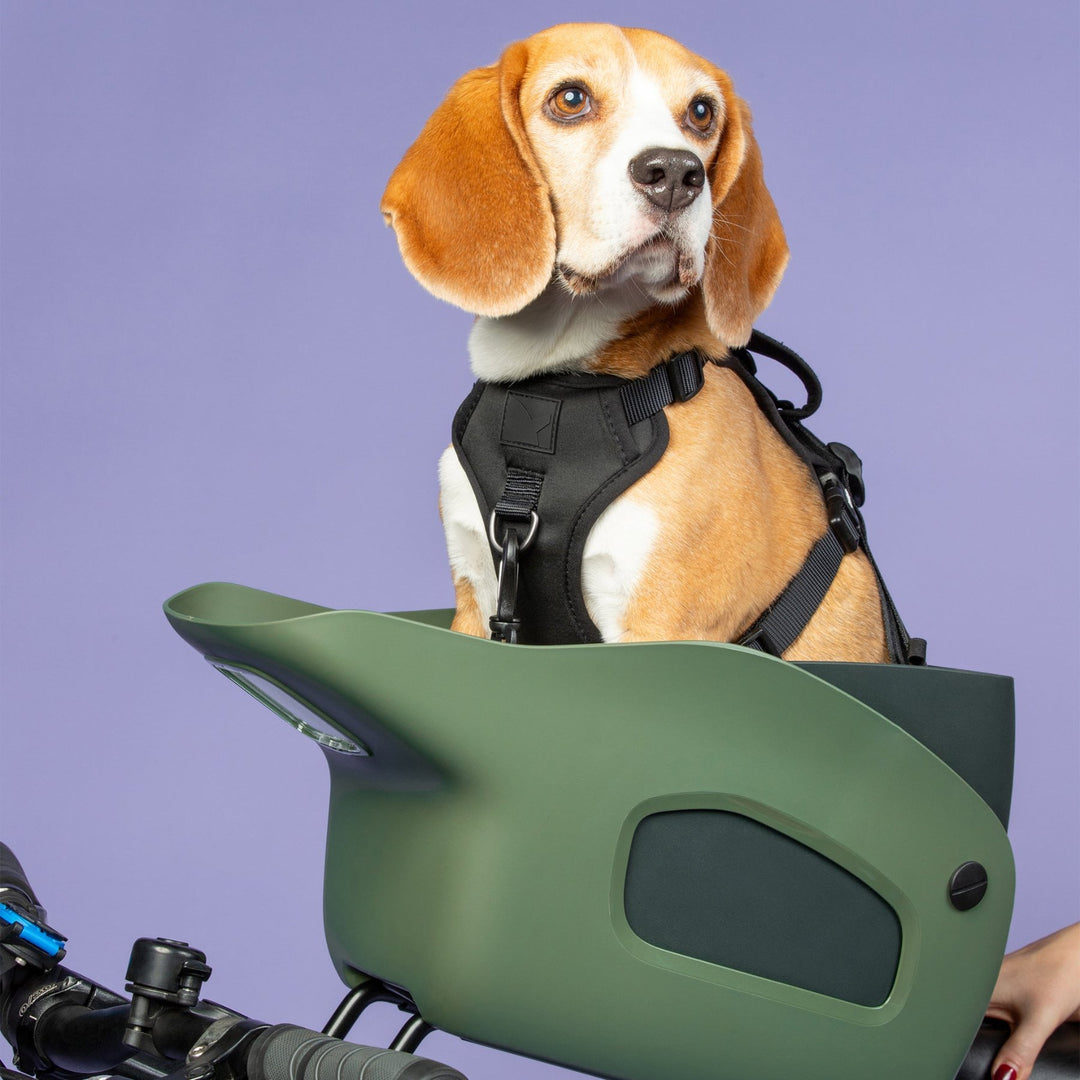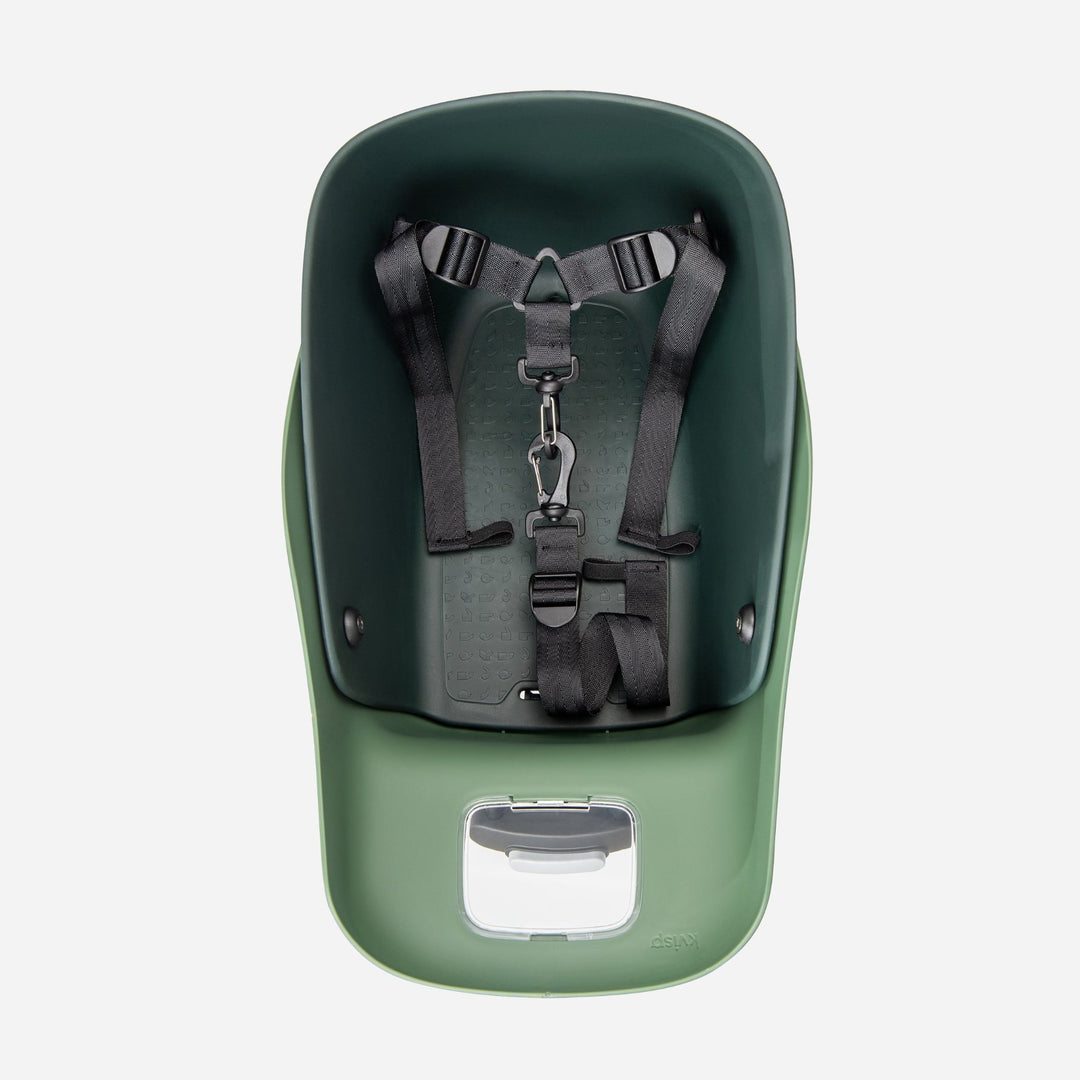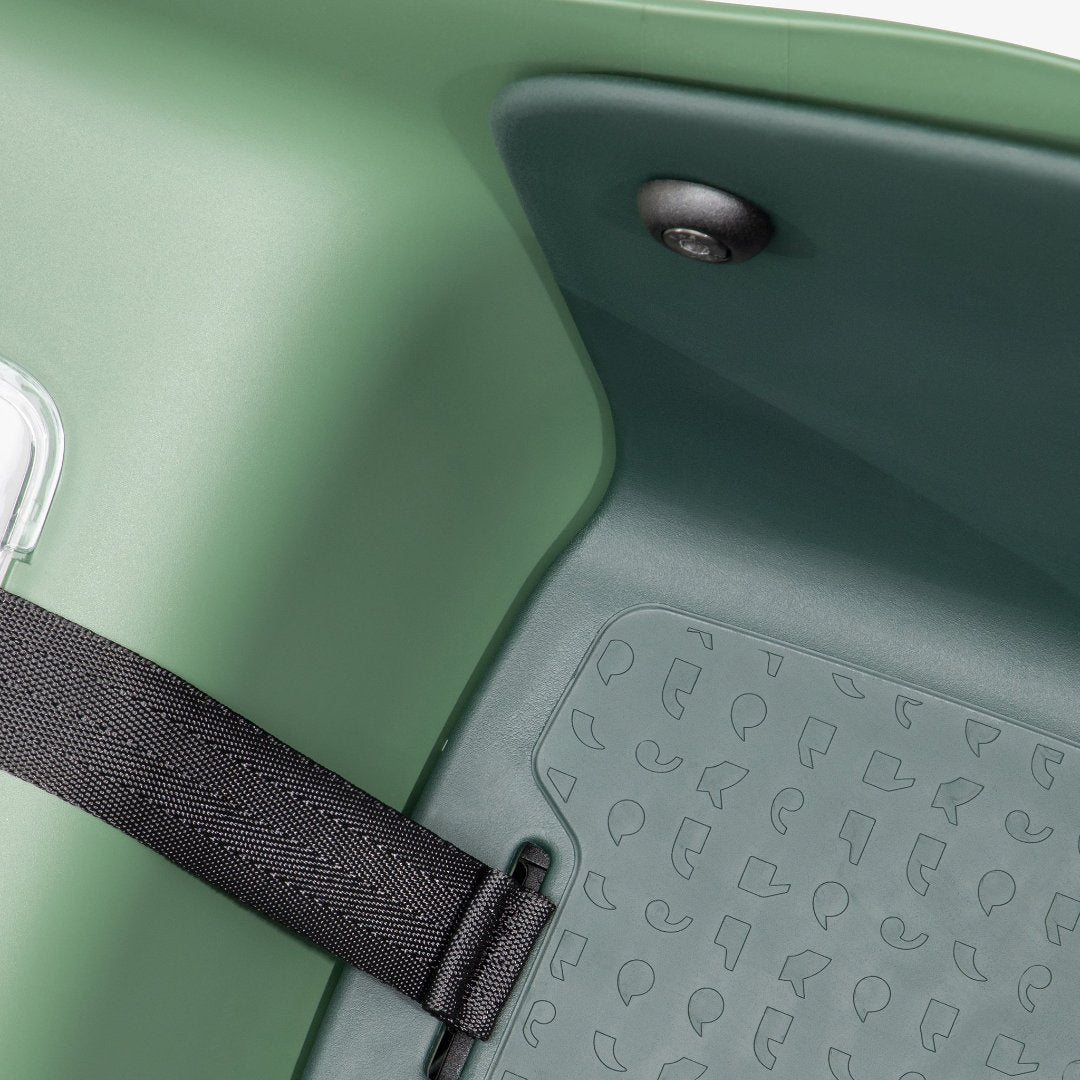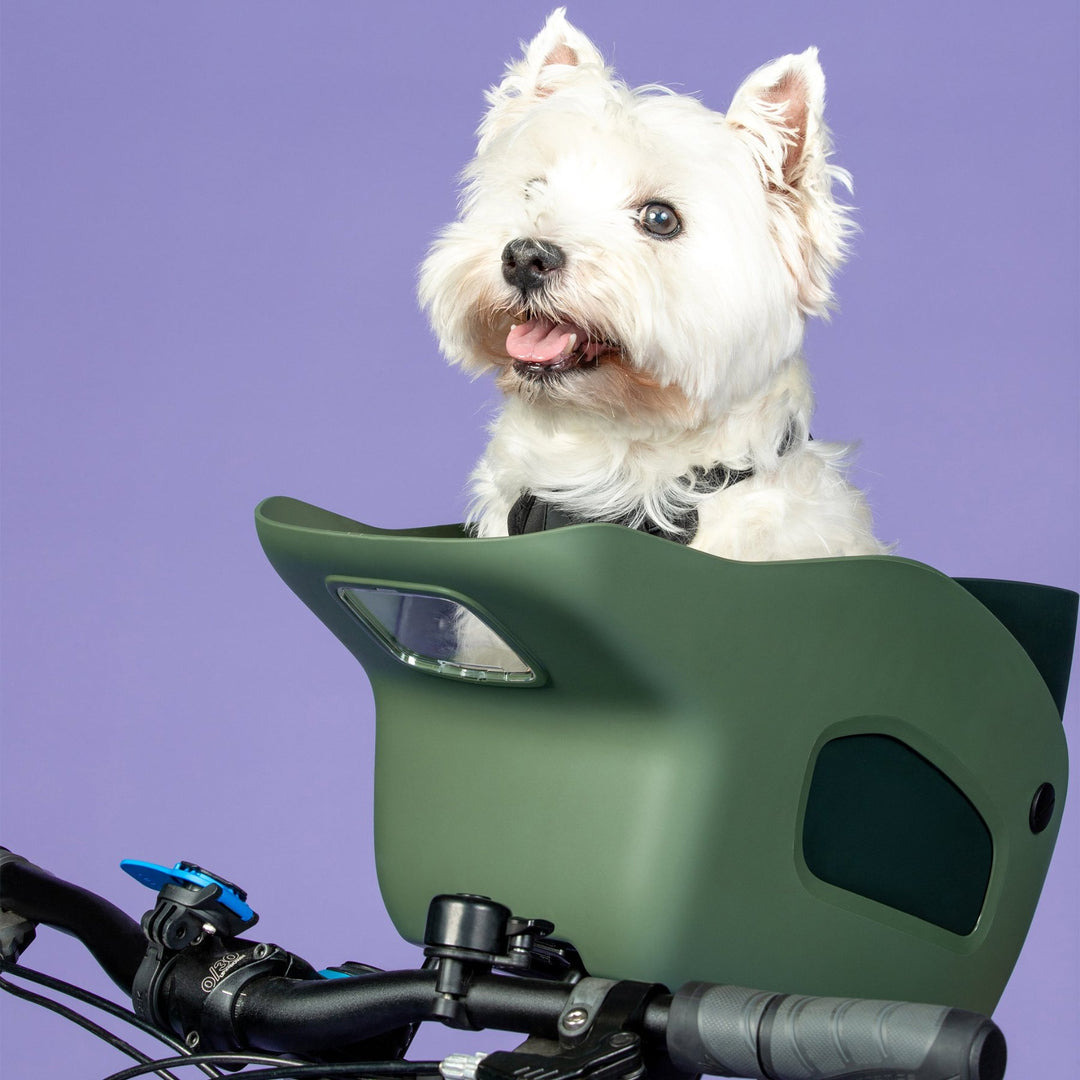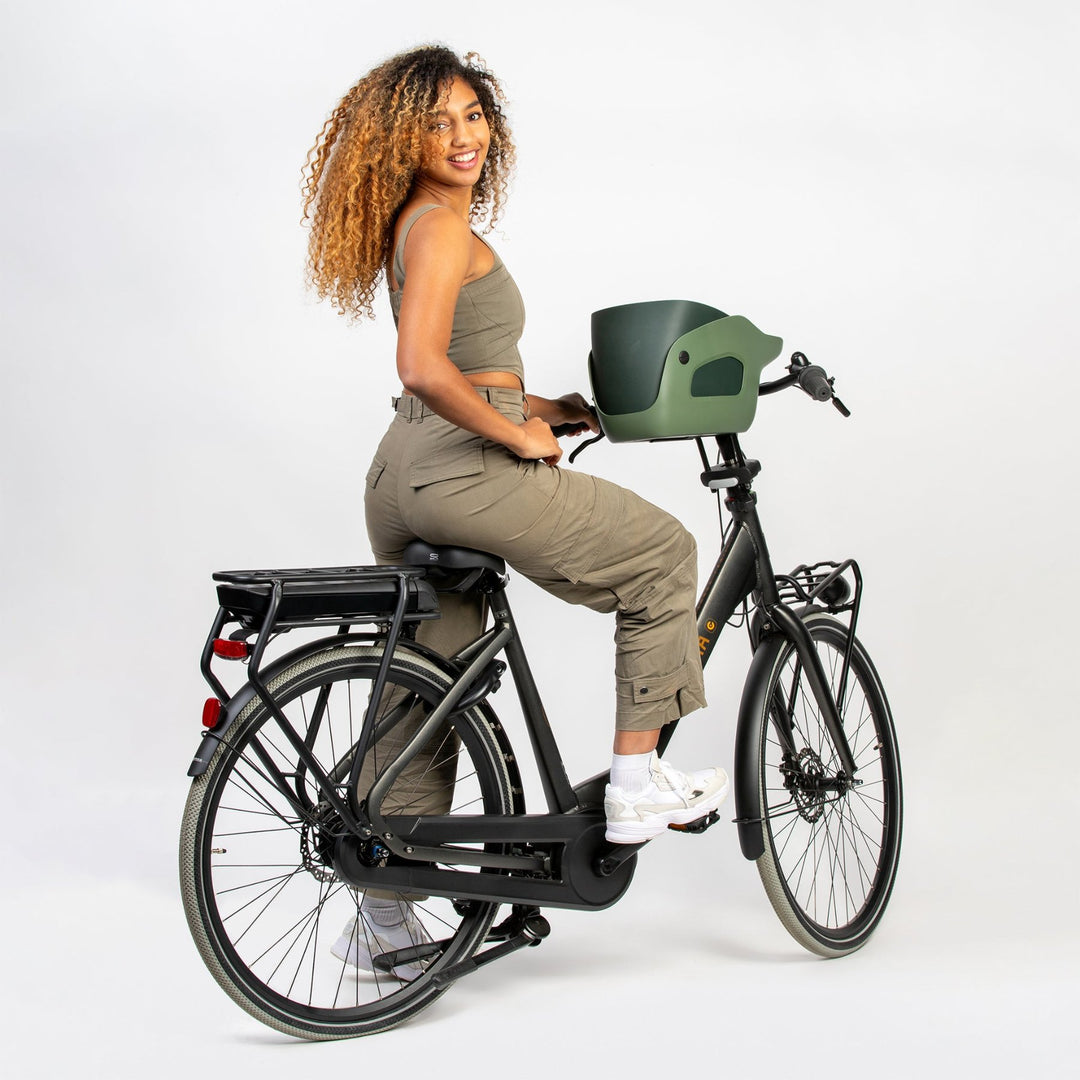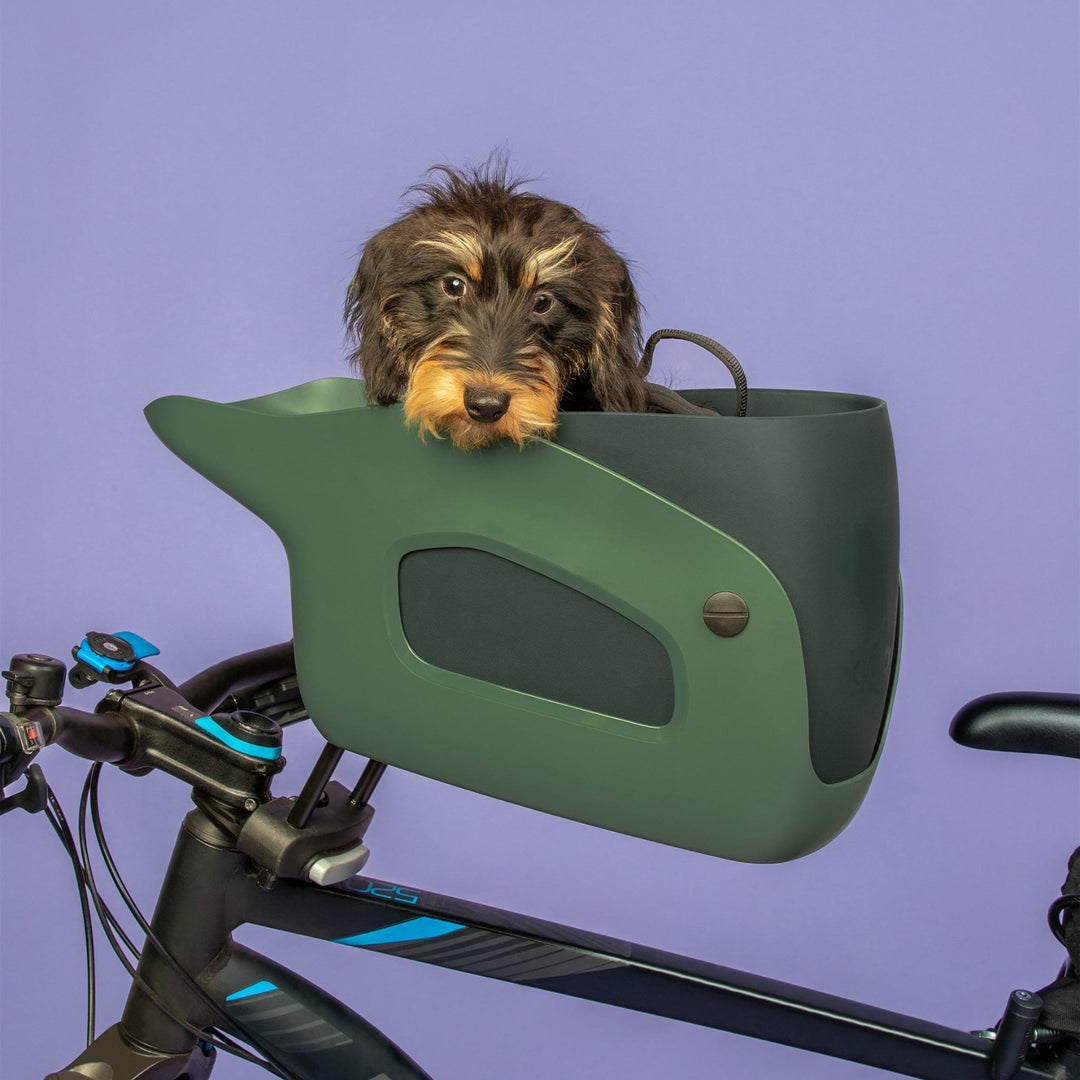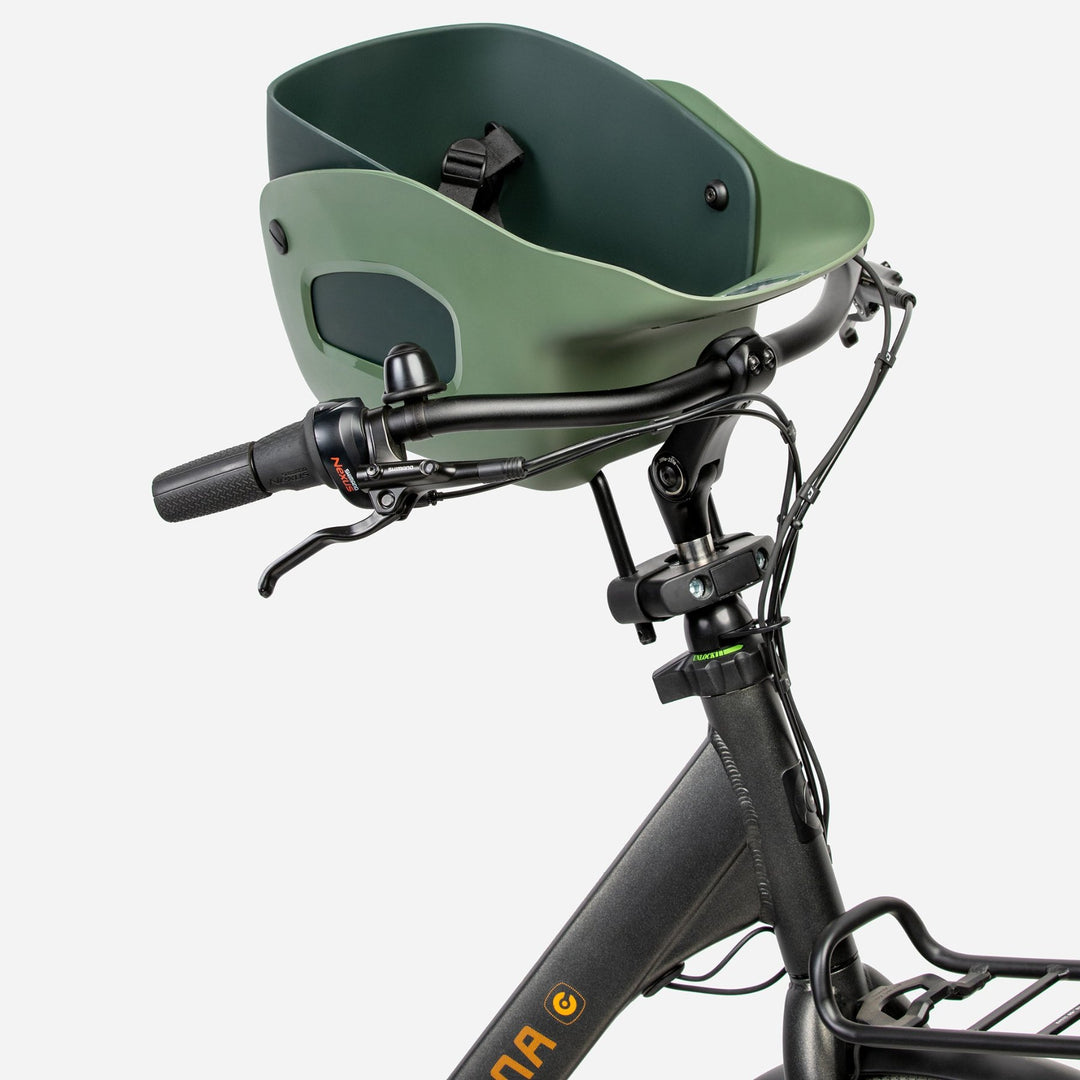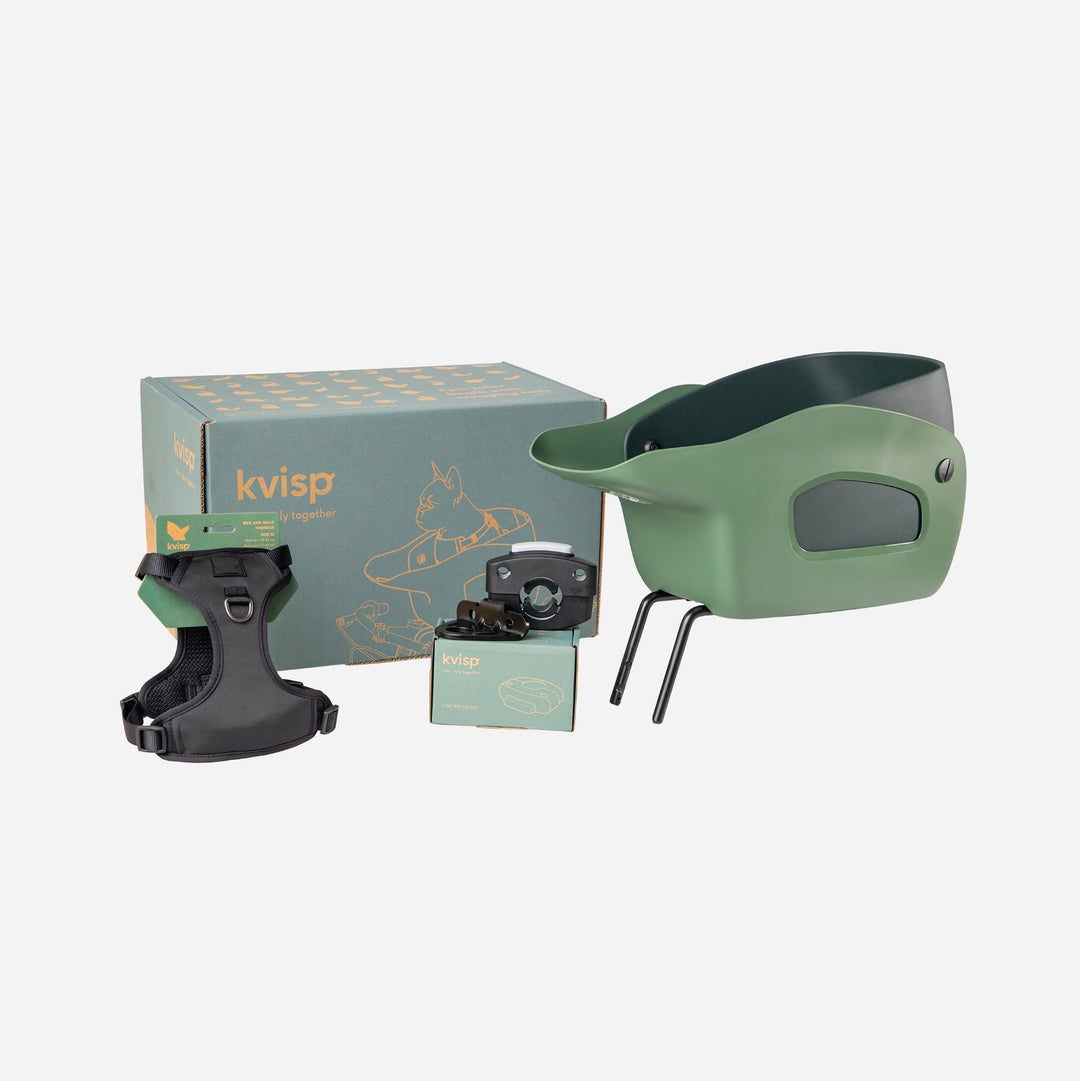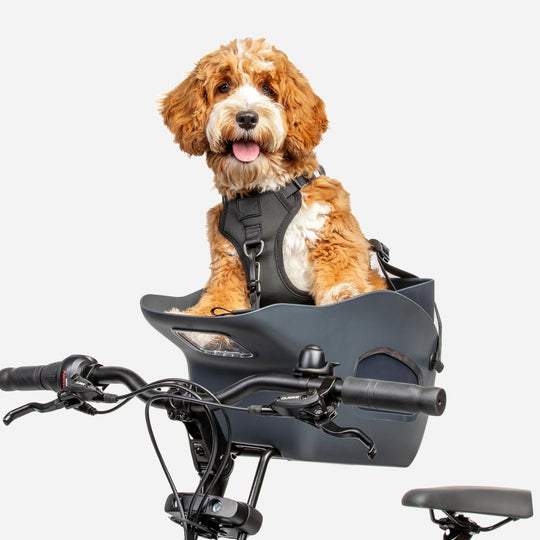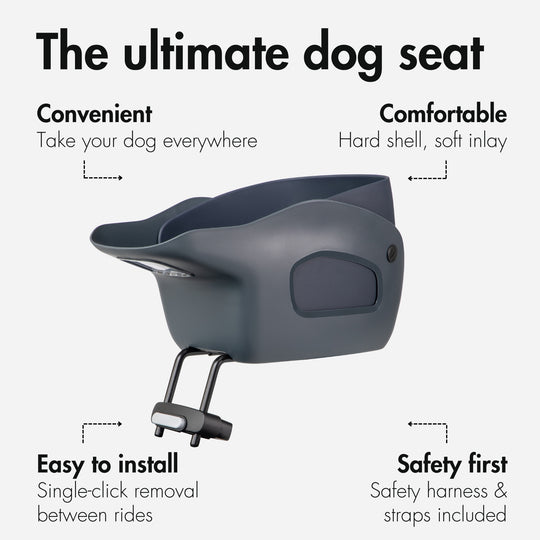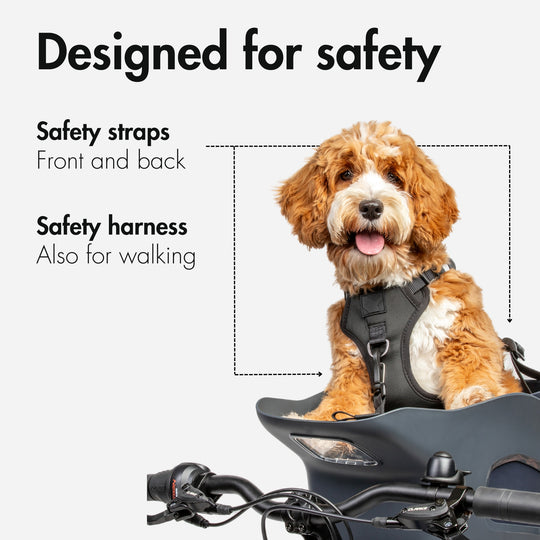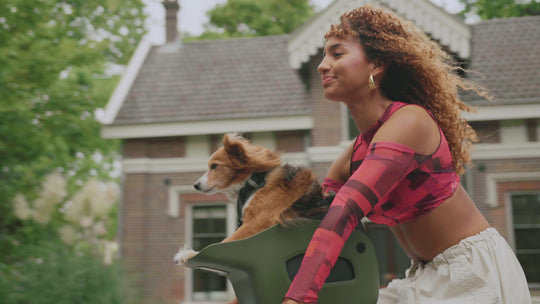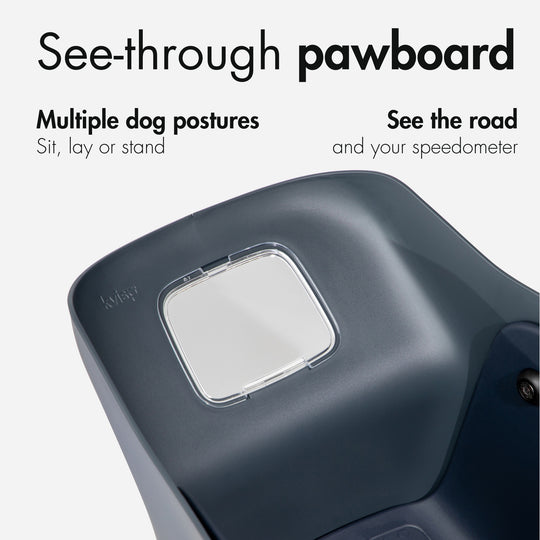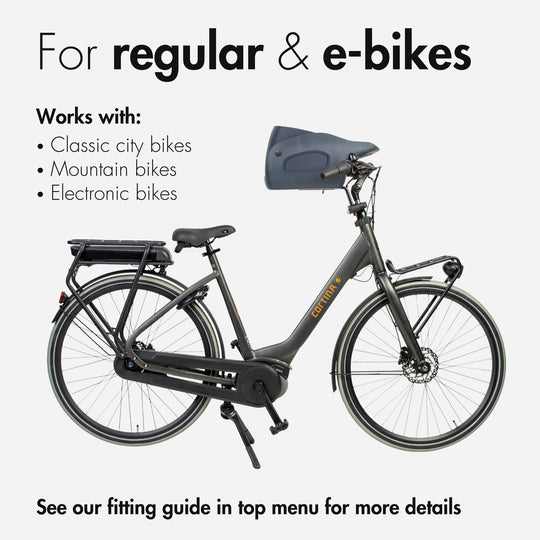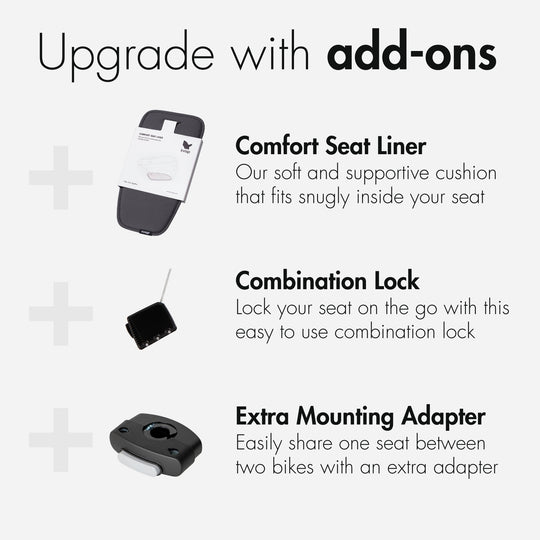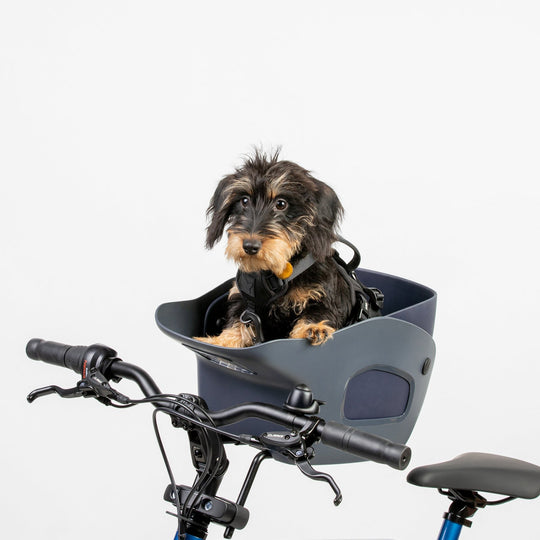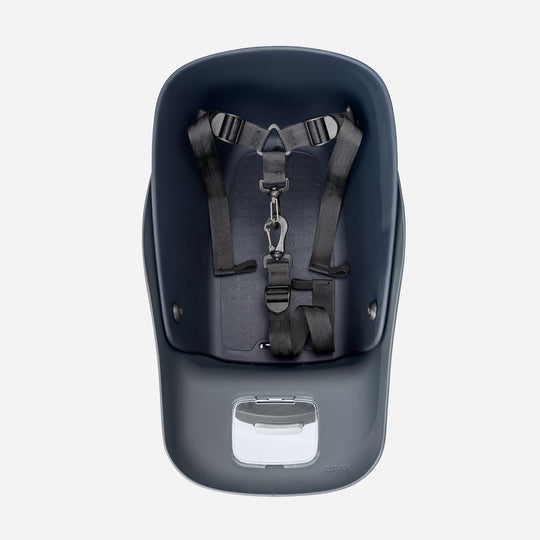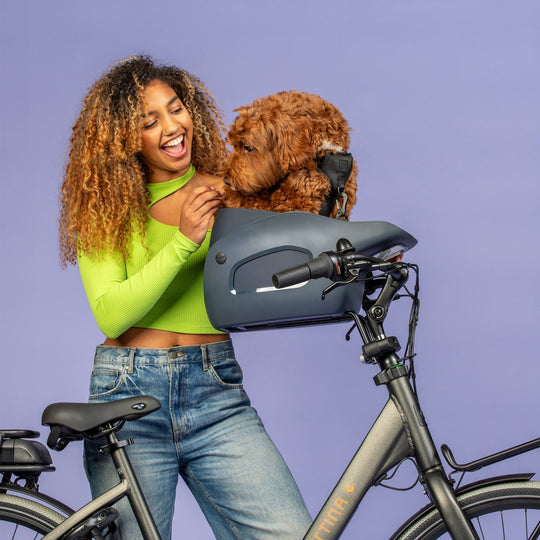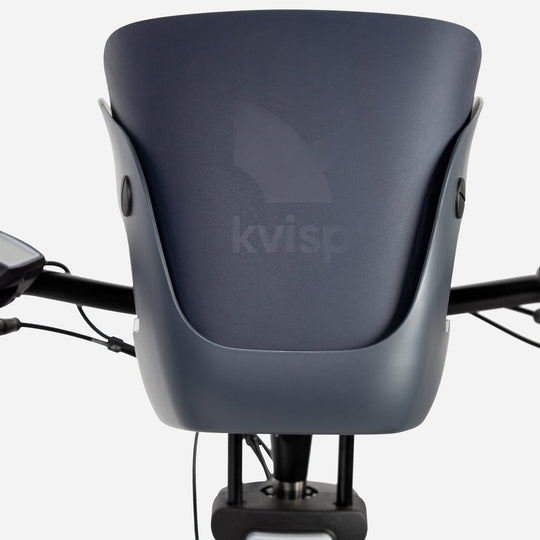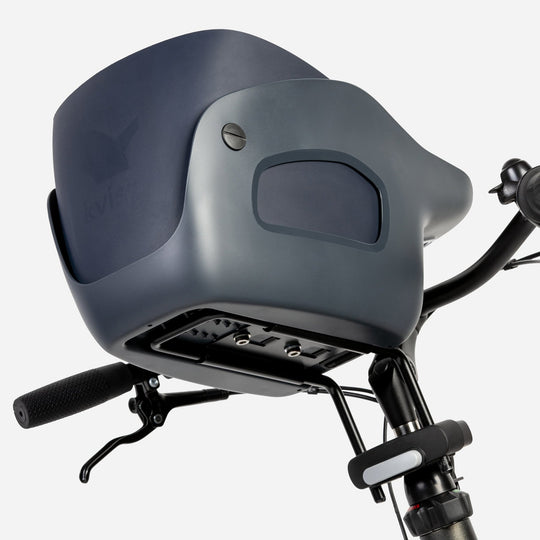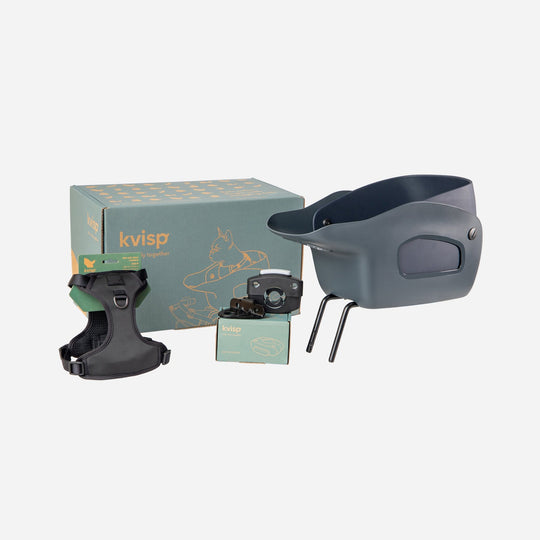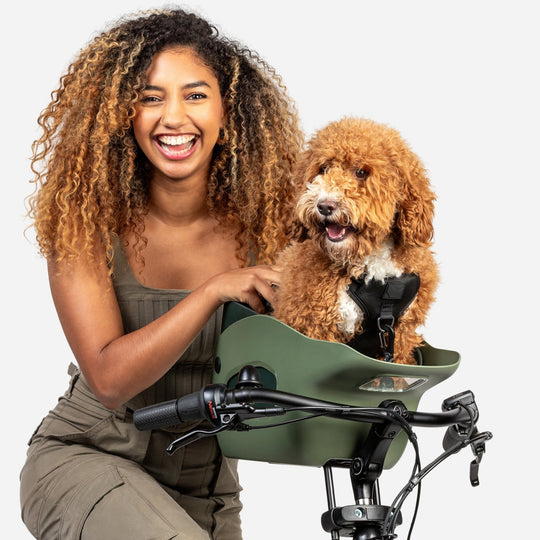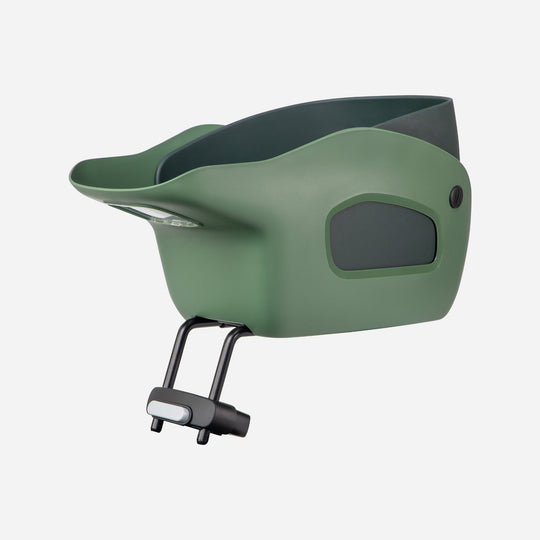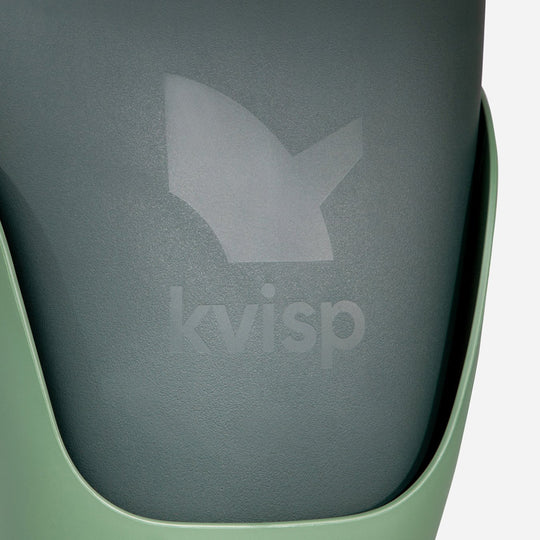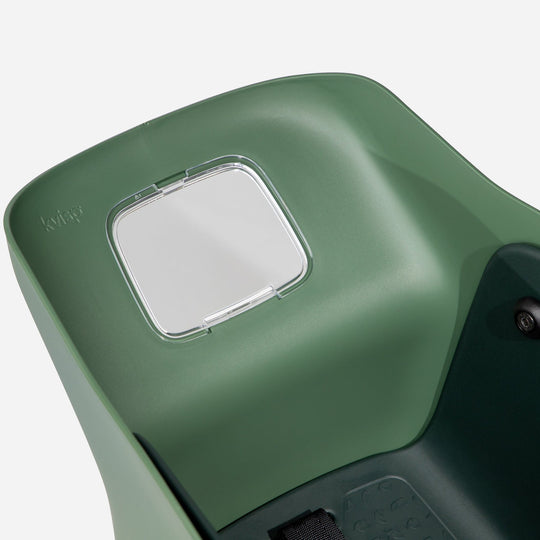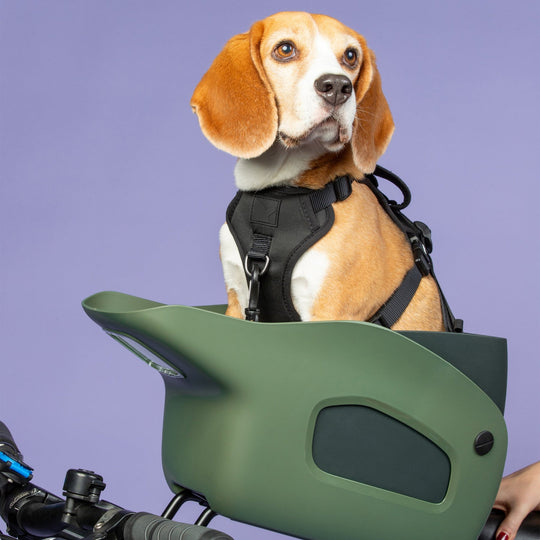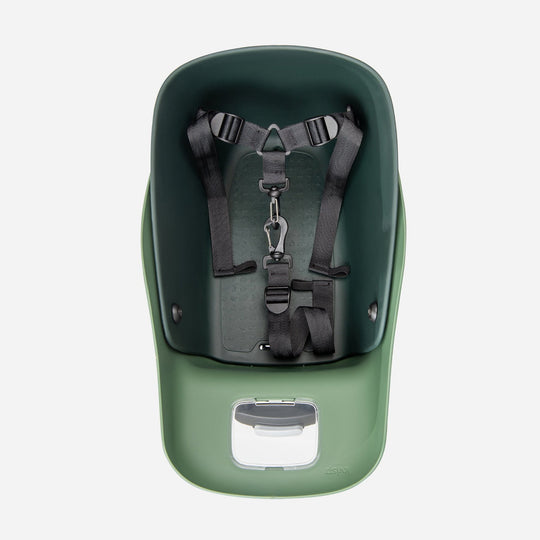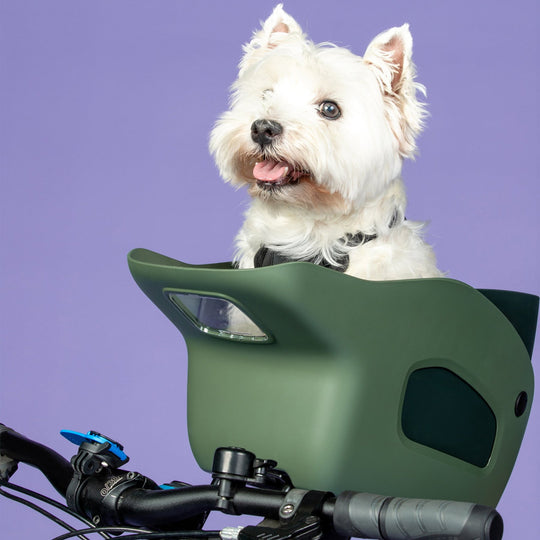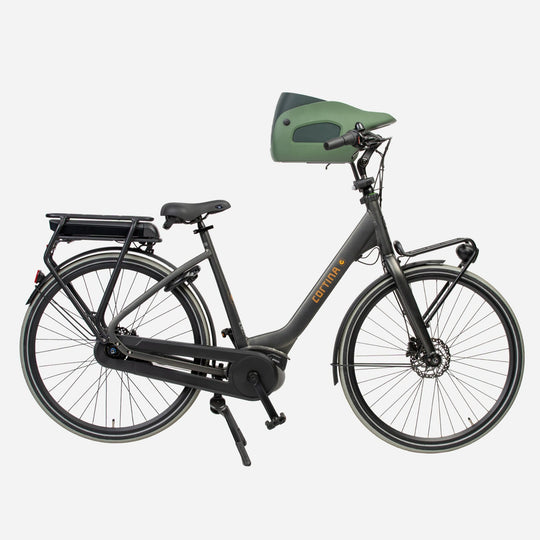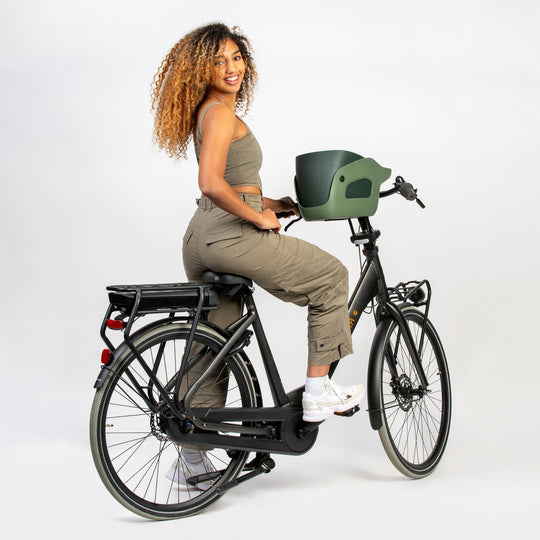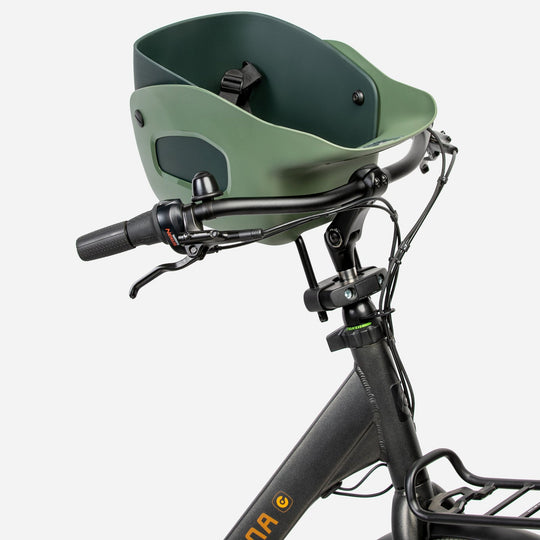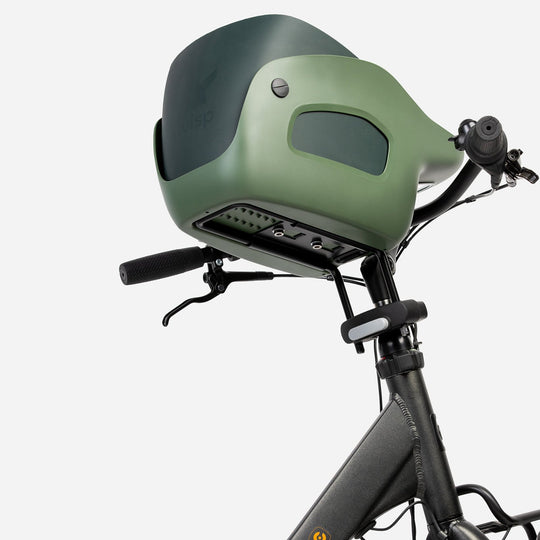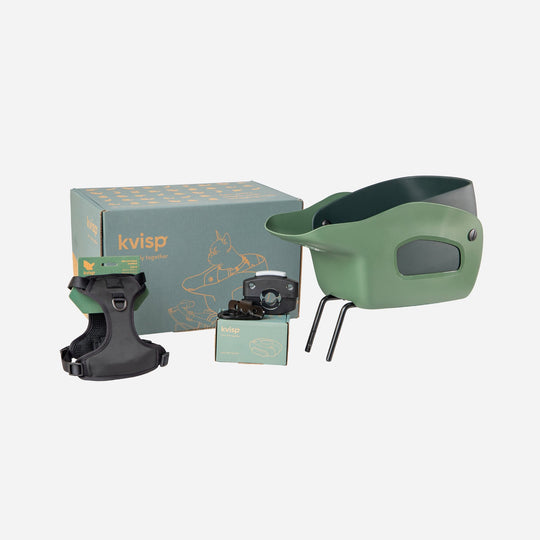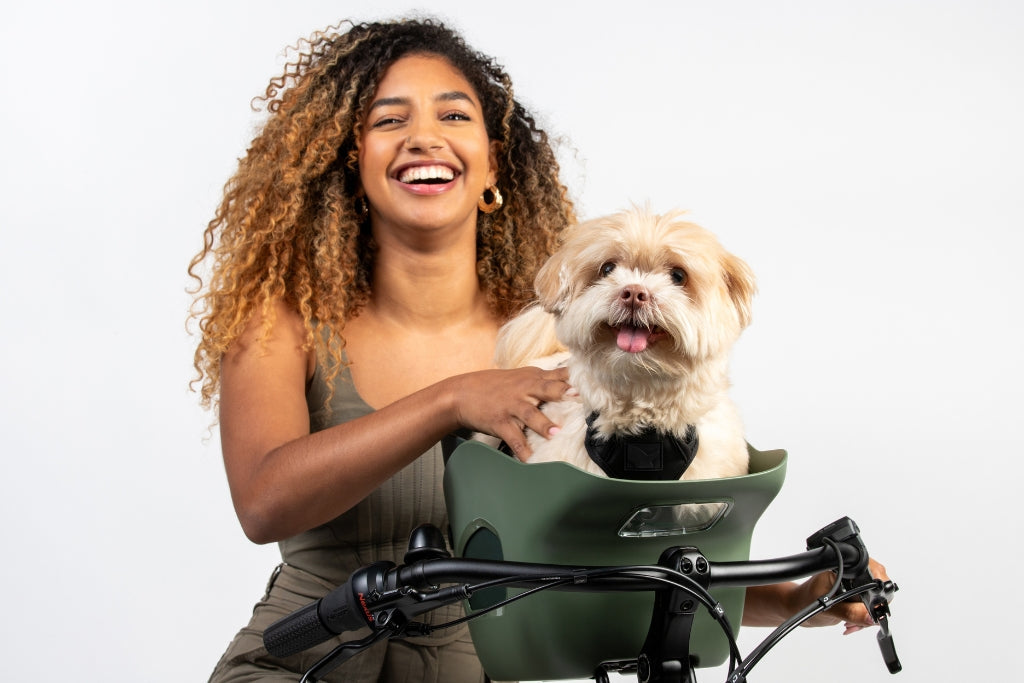E-Bike vs. Traditional Bike: Which is Better for Riding with Your Dog?
Cycling with dogs is becoming more than just a trend—it’s a lifestyle shift. More dog parents are embracing bike rides as a way to spend quality time outdoors while keeping their pups active. Whether it’s a leisurely ride through the park or a longer adventure on scenic trails, bringing your dog along can make every journey more exciting. But that brings up the big question: What’s the best way to ride with your dog? Do you go for a traditional bike, or is an e-bike the better option? Each choice has unique advantages, and picking the right one can make all the difference in your biking experience.

One thing is for sure: If you’re biking with your pup, having the right setup is key. A well-designed ebike dog carrier or a sturdy bike basket ensures a safe and comfortable ride for your furry passenger. But beyond that, the type of bike you choose plays a major role in stability, control, and the overall experience for both you and your dog. Let’s take a deep dive into what makes each bike type unique and which one might be the best fit for your adventures together!
Understanding E-Bikes and Traditional Bikes
At their core, both e-bikes and traditional bikes serve the same purpose—they get you from point A to point B. But the way they function is vastly different. E-bikes come with built-in motors that assist with pedaling, making it easier to ride longer distances and tackle inclines without breaking a sweat. Traditional bikes, on the other hand, rely purely on human power, requiring more physical effort but offering a simpler, more affordable experience.
So, how do these differences affect riding with a dog? Here’s a quick breakdown:
-
E-Bikes
-
Provide pedal assistance, making long rides and hilly routes easier
-
Allow for smoother acceleration, reducing jerky starts that might startle your dog
-
Heavier and more stable, which can enhance balance when carrying a dog carrier
-
Require charging and some maintenance, especially for the battery and motor
-
Traditional Bikes
-
Lightweight and easy to maneuver, making them great for casual city rides
-
Require physical effort, which can be great for fitness but might tire you out faster
-
No need for charging or motor maintenance—just grab and go!
-
Typically more affordable, especially for high-quality models
Both options have their perks, but depending on your dog’s size, temperament, and how far you plan to ride, one might be a better fit than the other. Let’s explore more factors to help you decide!
Safety Considerations for Riding with a Dog
Safety is the number one priority when biking with a dog—no matter which type of bike you choose. Even the most well-trained pups can get startled by sudden noises, shifts in movement, or unexpected obstacles on the road. That’s why choosing a bike that gives you maximum control and stability is essential.
E-bikes offer a clear advantage when it comes to maintaining a steady pace. The motorized assist means you won’t have to struggle up hills or overcompensate for sudden fatigue, which helps keep your ride smooth and predictable. This is especially useful when carrying a dog bike carrier, as abrupt pedaling changes on a traditional bike can make balancing tricky. On the flip side, traditional bikes allow for a greater sense of control over speed, especially when navigating crowded or unpredictable paths. If you’re cycling in a busy urban area or weaving through pedestrian traffic, being able to manually adjust speed without motor assistance can be beneficial.
For any bike type, a few safety essentials can make all the difference:
✔️ Secure, well-ventilated dog carriers that prevent shifting or tipping
✔️ A reliable harness or safety tether to keep your dog secure
✔️ Brake checks before every ride to ensure stopping power when needed
✔️ Eye protection for dogs (yes, doggy goggles are a thing!) for wind and debris
✔️ Reflectors and bike lights for visibility in low-light conditions
Regardless of your bike choice, taking these precautions will keep you and your pup safe, happy, and ready for adventure!
Terrain and Riding Conditions
The type of terrain you plan to ride on is a huge deciding factor when choosing between an e-bike and a traditional bike. Not all routes are created equal—some are smooth and easy, while others are rugged and demanding. Understanding how each bike performs in different conditions will help you choose the best setup for your rides with your dog.
👉 Flat, paved roads: If your rides mostly take place on city streets or well-maintained bike paths, both e-bikes and traditional bikes work well. E-bikes give you an effortless glide, while traditional bikes provide a classic ride experience.
👉 Hilly or steep terrain: This is where e-bikes shine! The pedal assist helps conquer hills without exhausting yourself, making it a great choice if you frequently ride in areas with inclines. Traditional bikes require more leg power, which might make longer rides with a dog more tiring.
👉 Gravel or off-road trails: While traditional bikes can handle light trails, e-bikes with wider tires and higher torque make off-road riding much smoother. If you and your pup love exploring dirt paths or forest trails, an e-bike might be a better choice.
👉 Long-distance rides: Planning to cover a lot of ground? An e-bike allows for longer journeys without the exhaustion, making it ideal for endurance rides with a dog carrier attached.
If you love the idea of extended scenic rides with your dog but don’t want to be limited by your endurance, an e-bike can keep the adventure going without wearing you out. On the other hand, if your rides are mostly short and leisurely, a traditional bike could be all you need.
Physical Effort and Endurance
Let’s be real—cycling with a dog isn’t just about them enjoying the ride. You also need to think about your own endurance and comfort. If you love a good workout, a traditional bike will give you that natural burn while keeping you engaged with the ride. Every pedal stroke is powered by you, making it an excellent form of exercise for those who enjoy staying active.
But if you want to ride longer without feeling drained, an e-bike can be a game-changer. The pedal assist feature allows you to cycle farther and tackle inclines with ease, which is especially helpful when carrying extra weight, such as a dog bike carrier with a pup inside. This means you can enjoy extended adventures without worrying about fatigue cutting your ride short.
Consider these questions when deciding which bike suits you best:
👉 Do you enjoy the physical challenge of cycling, or do you prefer a relaxed ride?
👉 How long do you usually bike with your dog?
👉 Do you often ride in hilly areas that could benefit from pedal assistance?
👉 Are you looking for a sweat-free commute, or do you want your rides to double as a workout?
While both bike types offer a great way to stay active, your endurance level and ride preferences will ultimately determine which one fits your lifestyle best.
Dog Comfort and Experience on Each Bike Type
Your dog’s comfort matters just as much as yours! A smooth, stable ride is essential to keeping your pup happy and relaxed during the journey. E-bikes offer a consistent pace, which can be reassuring for dogs who prefer a steady ride. Traditional bikes, on the other hand, require more manual adjustments in speed, which might cause some unpredictable movements.
Another factor to consider is noise. E-bikes have a motor, which produces a low hum that some dogs might need time to adjust to. While it’s not loud, it can be a new sensation for pups who are sensitive to sounds. Traditional bikes are silent, making them a more familiar experience for dogs who might be hesitant about new noises.
A few ways to ensure a smooth and comfy ride for your dog:
-
Start with short, slow rides to help them adjust
-
Use a well-padded, secure carrier designed for stability
-
Pay attention to their body language—if they seem anxious, ease into longer trips gradually
The goal is to make biking an enjoyable experience for both of you, and choosing the right setup will make all the difference.
Load Capacity and Carrying Essentials
When riding with a dog, load capacity is a critical factor. The weight of your dog, along with any additional gear you carry, can affect the stability and handling of your bike. E-bikes typically have a sturdier frame and a higher weight capacity, making them an excellent choice for carrying a dog carrier without feeling like you’re struggling with extra weight. The motor assist also helps distribute effort, so you’re not constantly pushing against resistance, especially on inclines.
Traditional bikes, while lighter, rely entirely on your strength to move forward. If your dog is on the heavier side, this can turn a fun ride into a serious workout! That’s why it’s essential to check the recommended weight limits for both your bike and your ebike dog carrier. Overloading a traditional bike may lead to instability, making it harder to steer safely. No matter which bike you choose, always ensure your dog's carrier is securely attached, and pack essentials like:
-
A collapsible water bowl & water bottle to keep your pup hydrated
-
A safety harness or tether to keep them secure in the carrier
-
Reflective gear & lights for increased visibility on the road
-
A small first-aid kit in case of minor scrapes or injuries
-
Dog treats & toys to make the ride more enjoyable
Proper planning can make a world of difference in ensuring a smooth and stress-free ride for you and your furry co-pilot!
The Role of a Reliable Dog Bike Carrier
Whether you're using an e-bike or a traditional bike, one thing remains constant: the importance of a secure, well-designed dog bike carrier. Having a stable carrier minimizes unnecessary movement, prevents tipping, and ensures your pup is comfortable throughout the ride. If your dog is uneasy or shifting too much inside a poorly designed carrier, it can throw off the bike’s balance, making it harder to ride safely.

That’s where the Kvisp Dog Bike Carrier comes in. Built for both e-bike and traditional bike users, this carrier is lightweight yet sturdy, ensuring that your dog stays securely in place even on longer rides. The breathable, padded interior keeps your pup comfortable, while the easy-to-mount design makes setup effortless. Whether you're casually riding through the neighborhood or heading out for an extended adventure, a high-quality ebike dog carrier can be the difference between a relaxing ride and a stressful one.
If you’re looking for a carrier that prioritizes safety, durability, and comfort, check out the Kvisp Dog Bike Carrier product page or read what other dog-loving cyclists have to say on our reviews page. Your pup deserves the best, and so do you!
Cost and Maintenance Factors
Price is often a deciding factor when choosing between an e-bike and a traditional bike. E-bikes have a higher upfront cost, with models ranging anywhere from $1,000 to over $3,000, depending on features and quality. In contrast, traditional bikes are generally more affordable, making them a budget-friendly choice for casual riders. However, price alone doesn’t tell the whole story—maintenance costs should also be considered.
E-bikes require more upkeep due to their electronic components. Batteries need to be charged regularly, and over time, they may require replacements, which can be expensive. Traditional bikes, while requiring tune-ups and occasional repairs, have lower long-term maintenance costs. However, if you're riding frequently with a dog bike carrier, it's worth investing in a bike that can handle the weight and demands of longer rides. If convenience and comfort outweigh budget concerns, an e-bike might be the better investment in the long run.
Environmental Impact and Sustainability
Both e-bikes and traditional bikes are eco-friendly alternatives to driving, but there are a few key differences when it comes to sustainability. Traditional bikes are 100% emission-free, relying solely on human power to get you moving. If your goal is to minimize your carbon footprint as much as possible, a traditional bike is the ultimate green choice.
E-bikes, while still far more sustainable than cars, do rely on batteries, which eventually need to be replaced. However, they are an excellent alternative for those who might otherwise rely on a car for commuting or long-distance travel. Compared to gas-powered vehicles, e-bikes reduce carbon emissions, making them a solid choice for eco-conscious riders who still want the convenience of pedal assist. If you love taking your dog on errands or weekend adventures, swapping car trips for e-bike rides is a fantastic way to contribute to a greener planet.
Choosing the Right Option Based on Your Lifestyle
The right bike for you depends on your personal needs, lifestyle, and how often you plan to ride with your dog. If you’re someone who enjoys short, leisurely rides and prefers a classic cycling experience, a traditional bike might be the best fit. But if you love the idea of going on longer adventures without worrying about exhaustion, an e-bike could be the better choice.
Ask yourself these questions:
👉 Do you prioritize fitness, or do you prefer a more relaxed ride?
👉 Will you be biking on steep hills or rough terrain?
👉 How often do you plan to ride with your dog?
👉 Are you willing to invest in an e-bike, or do you prefer a lower-cost option?
If your main goal is effortless, long-distance travel with your pup, an e-bike is hard to beat. But if you enjoy the simplicity and affordability of traditional cycling, sticking with a standard bike may be the way to go. Either way, choosing the right dog bike carrier will ensure your dog stays safe, secure, and happy on every ride!
Finding the Perfect Balance
So, which is better for riding with your dog—an e-bike or a traditional bike? The answer depends entirely on your needs, preferences, and riding style. Both options have their advantages, and the best choice is the one that fits your lifestyle and makes biking with your pup an enjoyable experience.
For those who love speed, comfort, and the ability to ride longer without tiring out, an ebike dog carrier setup is a fantastic option. The motorized assist makes carrying extra weight easier, letting you enjoy extended rides without feeling exhausted. But if you love the challenge and simplicity of traditional cycling, a standard bike still offers a great way to bond with your dog while getting a solid workout.
No matter which bike you choose, the most important thing is making sure your dog is safe, secure, and comfortable throughout the ride. Investing in the right dog bike carrier will ensure that every adventure together is a smooth and enjoyable one. Now, the only question left is—where will you and your pup ride next?




